

APPLIED PROTECTS THE TITANS OF INDUSTRY.® ©2023 Applied Underwriters, Inc. Rated A- (Excellent) by AM Best. Insurance plans protected U.S. Patent No. 7,908,157. IT PAYS TO GET A QUOTE FROM APPLIED®



Accepting large workers’ compensation risks. Most classes. All states, all areas, including New York City, Boston, and Chicago. Few capacity and concentration restrictions. Simplified financial structure covers all exposures. EXPECT THE WINNING DEAL ON LARGE WORKERS’ COMPENSATION. Call (877) 234-4450 or visit auw.com to get a quote.



4 | INSURANCE JOURNAL | OCTOBER 16, 2023 INSURANCEJOURNAL.COM News & Markets 8 Independent Agents Are Shopping Premiums Despite Record High Carrier Satisfaction 8 Homeowners Unprepared for Non-Weather-Related Water Damage: Hanover Report Shows 9 Three-Quarters of Firms Globally Are Not Ready for New ESG Rules: KPMG Report 12 AM Best Tweaks State Farm Outlook to Negative After Weather, Regulatory Issues 13 Insurance Broker in Menendez Corruption Case Allegedly Got Senator’s Help With Fraud Case 14 Businesses Unprepared for Cyberattacks Despite Steady Concern 15 Rising Claims Costs Limit US P/C Profitability in 2023: Swiss Re 20 Homeowners Face Rising Insurance Rates as Climate Change Makes Wildfires, Storms More Common Special Report 22 SILVER Best Agency to Work For – East: Levitt-Fuirst Insurance & Bonding 23 SILVER Best Agency to Work For – Midwest: Powers Insurance & Risk Management 24 SILVER Best Agency to Work For – South Central: CoVerica 25 SILVER Best Agency to Work For – Southeast: Ellis Insurance Agency 26 SILVER Best Agency to Work For – West: The Mahoney Group 28 Special Report: The Connectivity Challenge and the Future of Insurance Agents 32 Closer Look: From Disorderly to Orderly Reinsurance Renewals — What a Difference a Year Makes 38 Spotlight: Multifamily in Peril: The Perfect Storm Departments 6 Opening Note 10 Figures 11 Declarations 16 Business Moves 18 People 27 My New Markets Contents October 16, 2023 • Vol. 101 No. 19 Idea Exchange 36 Insurance Technology Is a Driver for Change 40 The Competitive Advantage: Property Rates and Reality Checks 42 Is It Covered?: Is It Auto or CGL … or Both or Neither? 44 Making Connections: Leveraging Memberships to Boost Business, Improve Community 46 3 Emerging Risks to Watch: Rising Lumber Costs, Solar Flares, Underground Climate Change 48 Cultivating Virtual Management Skills for the Hybrid World 50 Closing Quote: Redefining ‘Protection’ to Build a More Resilient Future
To offer truly specialized industry insurance, innovation is the name of the game. It’s how we’re taking specialization to a whole new level. With extensive experience in underwriting, risk engineering services and claims, we go beyond the expected. And we deliver the innovative, customizable solutions and service mid- to large-size businesses demand across a range of industries.

TheHartford.com/specialization The Hartford Financial Services Group, Inc., (NYSE: HIG) operates through its subsidiaries, including underwriting company Hartford Fire Insurance Company, under the brand name, The Hartford®, and is headquartered at One Hartford Plaza, Hartford, CT 06155. For additional details, please read The Hartford’s legal notice at www.TheHartford.com. 23-ML-2124378 © October 2023 The Hartford
THE SPECIALIZED INSURANCE YOU DIDN’T DARE DREAM ABOUT. BUT WE DELIVERED IT ANYWAY.
Note
Chairman of the Board Mark Wells | mwells@wellsmedia.com
Chief Executive Officer Joshua Carlson | jcarlson@insurancejournal.com
ADMINISTRATION / CIRCULATION
Chief Financial Officer Terry Freeburg | tfreeburg@wellsmedia.com
Financial Stress
Employee stress is on the rise as families and workers navigate higher prices, uneven wage growth and record credit card debt.
According to PwC’s 2023 Employee Financial Wellness Survey, 60% of full-time employees surveyed say that finances are the top cause of stress in their lives today. This is slightly higher even than the number of employees who were stressed about finances during the height of the pandemic, the survey revealed.
Even among employees earning $100,000 or more per year, nearly half (47%) are stressed about their finances. Financial stress impacts a wide range of employee health and well-being areas from mental health to sleep to self-esteem. This is an important consideration for employers today.
Following a notable trend over the past few years, PwC surveys showed that the number of full-time employees who report that their compensation isn’t keeping up with the rising cost of living expenses has risen to 59% in 2023. That’s up from 52% in 2022 and 41% in 2021.
The PwC report noted that employees reported difficulties meeting basic expense needs. Forty-nine percent of those responding to the survey said they find it difficult to meet household expenses on time each month (up from 41% in 2022). And among employees carrying credit card balances, 44% say they struggle to make minimum payments on time each month (up from 37% in 2022).
More than a quarter (28%) of employees said they often or always run out of money between paychecks. Even among those who earn $100,000 or more per year, 15% reported that they always or often run out of money between payments.
Why should employers care about employees’ financial well-being? Financially stressed employees tend to be more distracted, less engaged and more likely to seek another job, says PwC.
Distractions cost employers through employee productivity. According to PwC, among financially stressed employees who are distracted at work because of their finances, 56% spend three hours or more per week at work dealing with or thinking about issues related to their personal finances.
In today’s competitive talent market, it’s important to take note that financially stressed employees are also more likely to leave.
Financially stressed employees are twice as likely to be looking for a new job (36% of financially stressed employees compared to only 18% of non-financially stressed employees). Seventy-three percent of financially stressed employees say they would be attracted to another employer that cares more about their financial well-being compared to just 54% of non-financially stressed employees. Do you care?
Circulation Manager Elizabeth Duffy | eduffy@wellsmedia.com
Staff Accountant Sarah Kersbergen | skersbergen@wellsmedia.com
EDITORIAL
V.P. of Content Andrea Wells | awells@insurancejournal.com
Executive Editor Emeritus Andrew Simpson | asimpson@wellsmedia.com
National Editor Chad Hemenway | chemenway@insurancejournal.com
Southeast Editor William Rabb | wrabb@insurancejournal.com
South Central Editor/Midwest Editor Ezra Amacher | eamacher@insurancejournal.com
West Editor Don Jergler | djergler@insurancejournal.com
International Editor L.S. Howard | lhoward@insurancejournal.com
Content Editor Allen Laman | alaman@wellsmedia.com
Assistant Editor Jahna Jacobson | jjacobson@insurancejournal.com
Copy Editor Stephanie Jones | sjones@insurancejournal.com
Columnists & Contributors
Contributors: Mark Berven, Susan Hatten, Lauren Lieb, Alicia Morris, Lee Shavel
Columnists: Chris Burand, Tony Caldwell, Bill Wilson
SALES / MARKETING
Chief Marketing Officer
Julie Tinney | jtinney@insurancejournal.com
West Sales
Dena Kaplan | dkaplan@insurancejournal.com

Romeo Valdez | rvaldez@insurancejournal.com
Kelly DeLaMora | kdelamora@wellsmedia.com
South Central Sales
Mindy Trammell | mtrammell@insurancejournal.com
Southeast and East Sales (except for NY, PA, CT)
Howard Simkin | hsimkin@insurancejournal.com
Midwest Sales
Lisa Whalen | (800) 897-9965 x180
East Sales (NY, PA and CT only)
Dave Molchan | (800) 897-9965 x145
Advertising Coordinator
Erin Burns | eburns@insurancejournal.com
Insurance Markets Manager

Kristine Honey | khoney@insurancejournal.com
Sr. Sales & Marketing Coordinator
Laura Roy | lroy@insurancejournal.com
Marketing Administrator
Alberto Vazquez | avazquez@insurancejournal.com
Marketing Director Derence Walk | dwalk@insurancejournal.com
DESIGN / WEB / VIDEO
V.P. of Design
Guy Boccia | gboccia@insurancejournal.com
Web Team Lead
Josh Whitlow | jwhitlow@insurancejournal.com
Ad Ops Specialist
Jeff Cardrant | jcardrant@insurancejournal.com
Web Developer Terrance Woest | twoest@wellsmedia.com
Web Developer Jason Chipp | jchipp@wellsmedia.com
Digital Content Manager
Ashley Cochrane | acochrane@insurancejournal.com
Videographer/Editor
Ashley Waldrop | awaldrop@insurancejournal.com
ACADEMY OF INSURANCE
Director Patrick Wraight | pwraight@ijacademy.com
Online Training Coordinator
George Jack | gjack@ijacademy.com
6 | INSURANCE JOURNAL | OCTOBER 16, 2023 Write the Editor: awells@insurancejournal.com Opening
Andrea Wells V.P. of Content SUBSCRIPTIONS: Call (855) 814-9547 or visit ijmag.com/subscribe Outside the US, call (847) 400-5951 Insurance Journal, The National Property/Casualty Magazine (ISSN: 00204714) is published 22 times annually by Wells Media Group, Inc., 3570 Camino del Rio North, Suite 100, San Diego, CA 92108-1747. Periodicals Postage Paid at San Diego, CA and at additional mailing offices. SUBSCRIPTION RATES: $7.95 per copy, $12.95 per special issue copy, $195 per year in the U.S., $295 per year all other countries. DISCLAIMER: While the information in this publication is derived from sources believed reliable and is subject to reasonable care in preparation and editing, it is not intended to be legal, accounting, tax, technical or other professional advice. Readers are advised to consult competent professionals for application to their particular situation. Copyright 202 Wells Media Group, Inc. All Rights Reserved. Content may not be photocopied, reproduced or redistributed without written permission. Insurance Journal is a publication of Wells Media Group, Inc. POSTMASTER: Send change of address form to Insurance Journal, Circulation Dept, PO Box 708, Northbrook, IL 60065-9967 ARTICLE REPRINTS: Contact (800) 897-9965 x125 or visit insurancejournal.com/reprints
Financially stressed employees tend to be more distracted, less engaged and more likely to seek another job.
Add Value and Foster Trust with the Right Medicare Supplement Insurance Plan
By Fred Roth, President of Medicare Supplement at Humana
Insurance plays a pivotal role in an individual’s personal well-being, yet its complexity often creates unnecessary stress. This emphasizes the indispensable role of brokers as trusted experts to navigate the intricacies of insurance and deliver a valuable plan for one’s personalized needs.
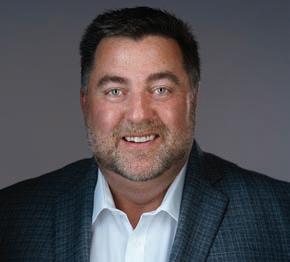
When it comes to Original Medicare, one of the most common contributors of unease for individuals is the prospect of being responsible for 20% of all their medical expenses, especially for beneficiaries living on fixed incomes. Brokers can play a unique role in alleviating that stress by introducing clients to Medicare Supplement insurance plans, or Medigap plans, which come in 12 different plan options and may help cover some of the out-ofpocket costs Original Medicare does not pay, including deductibles, coinsurance and copayments.
Unlike other types of insurance, all Medigap plans with the same letter designation offer the same benefits, regardless of the provider. For example, a Medigap Plan G from one insurance company will offer the same benefits as a Plan G from another company. To be in the best position to recommend the most beneficial insurance company for their client’s budget and needs, brokers must prioritize becoming familiar with each insurance carrier. Brokers who understand differentiating factors, such as an insurance company’s affordability, member resources, convenience, and reputation are at a distinct advantage.
Affordability
At Humana, we recognize the importance of affordable coverage for beneficiaries, which is why we try to add additional value for members whenever possible, including offering an up to 12% household discount for living with someone 18+ years of age in many states, not charging an application fee, and offering an additional $2 off monthly premiums for automatic monthly payments via online banking or credit card. Keep in mind, plans vary from state to state, so brokers should compare plans, and depending on the client’s location, they may be able to help them save hundreds on their premium per year.
Member Resources
It’s important to keep in mind that while affordability is a key consideration, cheaper isn’t always better, even with standardized plans. The quality of customer support varies, and clients want to know what additional services they may receive from their insurance carrier. It’s worth noting that Humana recognizes the vital role of nutrition in health and wellness. As part of their commitment to member well-being, in some states, Humana offers a post-discharge program, Humana Well Dine®, that provides fully prepared meals to eligible members following a qualified inpatient stay at a hospital or a nursing facility.
Additionally, members on certain plans can engage in the SilverSneakers® program, granting them access to a network of more than 15,000 fitness facilities nationwide, along with a wide range of indoor and outdoor fitness classes and social gatherings.
Convenience
In the lead-up to the year’s end, individuals are confronted with a myriad of “to-dos” that demand their attention. While navigating that end-of-year list, members appreciate that they don’t have to reenroll in Medicare Supplement plans during the Medicare Annual Election Period. Medicare Supplement plans are guaranteed renewable every
year, so clients don’t need to do anything if they are satisfied with their coverage.
Equally important to highlight is that Medigap policies offer beneficiaries the freedom and convenience to choose any doctor or hospital that accepts Medicare patients, giving them greater flexibility in their health care choices.
Reputation
Brokers should also consider an insurance carrier’s reputation for serving their members, partners and communities and how that will impact clients’ satisfaction.
Beyond the benefits it offers, Humana remains committed to the experience each member has with the company. For the third year in a row, Humana has been ranked No. 1 among health insurers for customer experience quality in Forrester’s proprietary 2023 U.S. Customer Experience Benchmark survey.
Net Promoter Scores® are also a good measure. For example, over the years, Humana has proven to be a historically reliable carrier, which has led to positive Net Promoter Scores (NPS) and member retention. This includes proactively sending members reminders about relevant benefits available to them year-round, adding value to the plan thoughtfully curated by their dedicated broker.
Health insurance brokers are invaluable to beneficiaries, but not just for expertise. Brokers provide a human connection and personalized counsel. Recommending a Medicare Supplement plan aligned with financial constraints, tailored to health requirements, renowned for excellent customer service, and boasting a solid reputation can not only establish trust with beneficiaries, but also result in their heightened satisfaction.
Additional Information
Humana received the highest CX Index™ score among health insurers in Forrester’s proprietary 2023 Customer Experience Benchmark Survey. The proprietary survey results are based on consumers’ opinions of their experiences with the brands in the survey. Forrester Research does not endorse any company included in any CX Index report and does not advise any person to select the products or services of any particular company based on the ratings included in such reports.
ADVERTORIAL
Independent Agents Are Shopping Premiums Despite Record High Carrier Satisfaction
Independent insurance agents report unprecedented satisfaction with their carrier partners, but that doesn’t mean they aren’t keeping their options open due to the rising cost of premiums.
According to the J.D. Power 2023 U.S. Independent Agent Satisfaction Study, overall agent satisfaction with insurers of both personal lines and commercial lines has reached an all-time high, surpassing 2022’s record-setting score.
Year over year, personal lines satisfaction achieved a significant 17-point increase, reaching a record 774 on a 1,000-point scale. Commercial lines satisfaction increased by six points to 762 points out of 1,000. The most significant gains in satisfaction with commercial lines are in claims process and support and communication, while the largest gains in personal lines are claims process and commission.
Even so, as client renewals come around, more agents have been shopping for lower prices to help with retention. More than half of personal lines (57%) and commercial (52%) lines agents say they are proactively shopping for clients more now than two years ago.
“Carriers are doing a great job of providing quality service to agents, and it creates a huge competitive advantage,” said Stephen Crewdson, senior director of insurance business intelligence at J.D. Power. “Agents are more willing to place business with a carrier when they are more satisfied with their experience.”
Agents cited the most significant factors in placing business with a specific insurer as ease of quoting (18% personal and 17% commercial) and risk appetite aligned with agency (13% personal and 15% commercial). Underwriting experience is more important for commercial
lines (10%) than personal lines (5%). Commission and incentives (6% personal and 5% commercial) are among the least important factors.
“However, the uptick in agents shopping their clients’ policies shows that rising premiums are the ultimate disruptor, threatening to upend even a strong existing relationship,” Crewdson said. “That puts the onus on carriers to find ways to incentivize agents to stay by offering an experience that can justify these cost hikes.”
Many independent agents are part of an agency alliance, giving them better access to more carriers, better buying access and increased support and communication. Generally speaking, the larger the alliance, the more satisfied agents are with insurers.
However, bigger isn’t always better. The largest alliances ($50 million+ in revenue) are the least satisfied of all alliance
groups (793 for personal lines and 755 for commercial lines), and agents are less satisfied than agents not in an alliance for commercial lines (765).
This year, Auto-Owners Insurance ranks highest among insurers for personal lines, scoring 839. Erie Insurance (829) ranks second and Progressive (806) ranks third. In 2022, Erie was first followed by Auto-Owners, The Hanover and Travelers.
Auto-Owners kept its top rank among insurers of commercial lines for a third consecutive year, scoring 847. Cincinnati Insurance (809) ranks second and The Hartford (792) ranks third. The results mirror those from 2022. Progressive moved from below the segment average in 2022 to the fourth spot in 2023.
The study was developed with the Independent Insurance Agents & Brokers of America (IIABA).
Homeowners Unprepared for Non-Weather-Related Water Damage: Hanover Report Shows
Homeowners lack preparedness for non-weather-related
water damage, even though water damage ranks as the second most prevalent cause of insurance loss claims, according to The Hanover Insurance Group in a new report.
Despite being a
leading cause of homeowners’ claims, only 17% of homeowners said non-weather water damage is their biggest damage concern regarding their homes, said The Hanover’s 2023 Home Water Damage Prevention Report, which aims to raise awareness about the risks of water damage from leaky pipes, appliances and other household sources.
Additional findings of the report include:
• Relatively few homeowners
are taking basic preventive measures. Only 17% of homeowners said they have a water sensor in their homes. In comparison, 84% have smoke detectors, 51% have fire alarms, 48% have security cameras and 34% have burglar alarms.
• Higher net-worth homeowners are more willing to invest in preventive measures. However, only 22% of homeowners with incomes of greater than $100,000 have water sensors in their homes.

8 | INSURANCE JOURNAL | OCTOBER 16, 2023 INSURANCEJOURNAL.COM News & Markets
Three-Quarters of Firms Globally Are Not Ready for New ESG Rules: KPMG Report
Three-quarters of companies globally are not ready to have their environmental, social and governance (ESG) data audited externally months before new regulations kick in, according to a new report from KPMG.

Stricter European Union, U.S. and global rules are being introduced, mostly in time for the 2024 reporting season, to replace a patchwork of voluntary private sector practices for listed companies to make climate-related disclosures.
Regulators say external auditing of sustainability-related data — while not as extensive as financial auditing — is crucial for giving investors information free of misleading environmental claims, known as greenwashing.
The EU rules will require disclosures be audited while countries adopting the International Sustainability Standards Board’s reporting
requirements can also demand external checking.
Yet of 750 companies surveyed by KPMG, only 25% feel they are sufficiently prepared.
“Being ESG assurance ready means identifying the relevant regulatory framework and having the right metrics with robust systems, processes, controls and governance for collecting and managing the data,” said Larry Bradley, KPMG’s Global Head of Audit.
KPMG’s ESG Assurance Maturity Index assessed the views of executives and board members across industries, regions and different firm sizes to measure companies preparedness.
Just over half of companies surveyed currently get some level of
external auditing of their ESG disclosures, but of those, only 14% are obtaining reasonable assurance and 16% limited assurance for all of their ESG disclosures as new rules will require, according to KPMG’s research.
“Now there will be regulatory and assurance requirements to report accurate information, which raises the bar on controls and processes as well as quali-
tative statements that will need to be made around the data,” Mike Shannon, Global Head of ESG Assurance at KPMG, said.
Larger companies are better prepared for auditing than smaller firms, KPMG found. Among countries, France, Japan and the United States came out on top; Brazil and China ranked worst.
Copyright 2023 Reuters.
• Prevention technology education is needed. Nearly 70% of homeowners are not familiar with water sensors and 61% have never heard of a water shut-off device.
• Homeowners need risk mitigation motivation. The top three reasons that homeowners said would make them more likely to install a water sensor or shut-off device are:
1) receiving a discount (45%),
2) learning that installation was easy (31%) or 3) obtaining
a recommendation from a professional (28%).
“Water is invasive, and there are some things even the very best insurance coverage can’t replace. When it comes to water, the best protection is risk prevention and it’s more critical than ever. Increasingly, proactive homeowners are discussing water with their independent insurance agents to deploy preventative measures and reduce exposure to water
damage,” said Daniel Halsey, president of Personal Lines at The Hanover, in a statement. “Our Home Water Damage Prevention Report points to an opportunity for homeowners to reach out to their insurance agent for counsel and insight relative to the risks involved and the technology available to mitigate those risks,” he added.
Methodology
This survey was conducted online within the United
States by The Harris Poll on behalf of The Hanover from April 13-17, 2023 among 2,074 U.S. adults aged 18 and above, among whom 1,516 are homeowners. For this study, the sample data is accurate to within +/- 2.8 percentage points using a 95% confidence level. The full results from the 2023 Home Water Damage Prevention Report can be found on The Hanover’s website.
OCTOBER 16, 2023 INSURANCE JOURNAL | 9 INSURANCEJOURNAL.COM
$3.37
Million
Figures

The number of vehicles Hyundai and Kia, combined, are recalling in the United States due to the risk of engine fires, telling owners to park outside and away from structures until repairs are complete. The automakers say brake fluid leaks can cause a short that could lead to a fire. Hyundai said it has reports of 21 fires and 21 other thermal incidents since 2017 related to the recall, while Kia has reports of at least 10 confirmed fires and melting incidents.

23,515
The number of residents in Louisiana’s Plaquemines Parish who have been affected by the mass inflow of salt water from the Gulf of Mexico into the drought-stricken Mississippi River, threatening drinking water supplies. In parts of Plaquemines Parish, residents have relied on bottled water for drinking and cooking since June. Gov. John Bel Edwards has asked President Joe Biden for a Federal Emergency Declaration that would authorize federal help.

The number of months of probation to which a Kansas woman has been given for insurance fraud, according to the Kansas Insurance Department (KID). Carolyn Engelhardt pleaded guilty in the District Court of Norton County on July 25, to one felony count of a fraudulent insurance act after she knowingly submitted a fraudulent auto claim to her insurance company for a loss that occurred prior to her purchasing the auto coverage. Engelhardt also was assessed a $500 fine and associated court costs.
15,000+
California Insurance Commissioner Ricardo Lara in mid-September ordered insurers to preserve residential insurance coverage for more than 15,000 policyholders affected by fires in Del Norte County and Siskiyou County after Gov. Gavin Newsom issued emergency declarations related to the fires. The commissioner’s order shields those living within the perimeters or adjoining ZIP Codes of the Smith River Complex fire and the Happy Camp Complex fire from insurance non-renewal or cancellation for one year from the date of the governor’s August 29 emergency declaration regardless of whether they suffered a loss.

10 | INSURANCE JOURNAL | OCTOBER 16, 2023 INSURANCEJOURNAL.COM 18
Declarations
Faulty Cranksets
“Shimano will replace any cranks that fail the inspection process. … There is no need for further action for cranks that pass the inspection process.”

— Cycling company Shimano said in an announcement recalling some 760,000 bike cranksets in the U.S. and Canada due to a crash hazard that has resulted in several reported injuries. The U.S. Consumer Product Safety Commission said the now-recalled crank parts can separate and break, risking crashes. More than 4,500 incidents of the cranksets separating and six injuries have been reported — including bone fractures, joint displacement and lacerations.
Mopping Hot Tar

“If you’ve never mopped tar. It’s — imagine being a Thanksgiving turkey in the oven, waiting to be taken out … Because the tar is about 500 degrees.”
— Anthony Mackie, an actor best known for his role as the new Captain America in the Marvel Cinematic Universe, said as he joined members of the nonprofit Rebuilding Together New Orleans and roofing manufacturer GAF to help repair the roof at the home of 81-year-old veteran Joe Capers. Mackie said he recently re-roofed his own house damaged by Hurricane Ida and “now my neighbors are asking me to fix their roofs.”
Fraternity Hazing Lawsuit
“[W]e want to be clear that acts of hazing and misconduct do not represent the Fraternity’s values. … Members who engage in these activities will be held accountable to the fullest extent.”
— The national organization for Sigma Alpha Epsilon fraternity said in a statement after a student and his parents filed a lawsuit against the University of Alabama chapter of the fraternity, saying he suffered a traumatic brain injury while being hazed as a fraternity pledge. The lawsuit accuses the SAE fraternity and others associated with it of fraud, negligence, and assault and battery.

‘A Piece of Home’
“I want the freedom to just be there and absorb what happened. … Whatever I might find, even if it’s just those jars of sea glass, I’m looking forward to taking it. … It’s a piece of home.”
— Said Jes Claydon said as officials began lifting restrictions on entry to the burn zone in Lahaina, Hawaii, where on Aug. 8 a wildfire swept through the area, killing at least 97 people and destroying more than 2,000 buildings, most of them homes. Claydon’s rental home where she has lived for 13 years and raised three children was destroyed.

Pedestrian Deaths
“We don’t know exactly what’s going on with the increase in pedestrian fatalities. It certainly seems like the increase in bigger vehicles is contributing to it.”

— Commented Jessica Cicchino, vice president of research at the nonprofit Insurance Institute for Highway Safety, regarding the rise in pedestrian and cyclist deaths on U.S. roadways. While the number of all car-related fatalities has trended upward over the last decade, pedestrians and cyclists have seen the sharpest rise: over 60% between 2011 and 2022. IIHS studies indicate the design of larger vehicles like SUVs and pickups can pose visibility problems.
Too Much THC?

“I have never knowingly sold any noncompliant product, and when I became aware of them I removed the products from inventory. … However, it has become clear that I have become a distraction that would stand in the way of the important work that needs to be done.”
— Erin Dupree, recently appointed director of Minnesota’s new marijuana regulatory agency, said in a statement upon resigning from the post amid reports that she sold illegal cannabis products in the state. Dupree’s business, Loonacy Cannabis Co. in Apple Valley, Minnesota, reportedly sold products exceeding state limits on THC potency, owed money to former associates and accumulated tens of thousands of dollars in tax liens.
OCTOBER 16, 2023 INSURANCE JOURNAL | 11 INSURANCEJOURNAL.COM
AM Best Tweaks State Farm Outlook to Negative After Weather, Regulatory Issues
The AM Best financial rating firm has downgraded its outlook for multiple State Farm insurance companies due to weather losses and regulations that the rating firm said hinder the insurance giant’s ability to adequately raise rates.
“The negative outlooks on the property/ casualty rating units primarily reflect recent adverse underwriting experience in the private passenger auto insurance line of business and the challenging regulatory environment that have constrained the ability of State Farm (as well as its industry peers) to increase premium rates in a timely fashion, along with continued elevated catastrophe-related loss experience in many parts of the country,” AM Best said in a news release.
The downgrades, from stable to negative, were for State Farm Mutual Automobile Insurance Co. and its affiliates, State Farm Fire and Casualty Co. and State Farm County Mutual Insurance Co. of Texas, based in Richardson, Texas. AM Best referred to those companies as the
State Farm Group.

The rating firm also revised its outlook to negative for State Farm Florida Insurance Co., based in Winter Haven, Florida, and for MGA Insurance, based in Dallas. It also revised the outlook to negative for State Farm General Insurance and for State Farm Life Insurance and State Farm Life and Accident Assurance Co.
“The weather-related losses, particularly from hurricane, winter and convective storms, as well as wildfires, have put further pressure on the group’s operating performance assessment,” AM Best officials said in the press release.
State Farm is one of several of the country’s largest property insurers that have made moves to reduce exposure in California, Florida and Louisiana, after hurricanes, wildfires and other losses. Carriers have blamed California’s regulatory environment for limiting rate increases needed to meet the reality of a changing climate.
California’s insurance commissioner in
late September announced major changes to that state’s regulations, allowing more inclusion of climate change models in rate making.
“The weather-related losses, particularly from hurricane, winter and convective storms, as well as wildfires, have put further pressure on the group’s operating performance assessment,” AM Best officials said in the press release.

AM Best said it has mostly affirmed the financial strength ratings for the State Farm companies, all of which have received top FSR marks in recent rating reviews. These include State Farm Lloyds, based in Texas; and HiRoad Assurance Co. and State Farm Indemnity Co., both headquartered in Bloomington, Illinois.
“The ratings of State Farm Group reflect its balance sheet strength, which AM Best assesses as strongest, as well as its strong operating performance, very favorable business profile and appropriate enterprise risk management (ERM),” the rating firm noted.
State Farm Group’s investment portfolio has remained strong, despite market volatility. The group increased its capitalization this year due to its stock market valuations, AM Best said.
“Notwithstanding these interim challenges, AM Best believes that State Farm Group’s operations will return to profitability and that capital market volatility will not impact either its risk-adjusted capitalization or business operations meaningfully,” the rating firm wrote.
12 | INSURANCE JOURNAL | OCTOBER 16, 2023 INSURANCEJOURNAL.COM
News & Markets
‘The weather-related losses, particularly from hurricane, winter and convective storms, as well as wildfires, have put further pressure on the group’s operating performance assessment.’
Insurance Broker in Menendez Corruption Case Allegedly Got Senator’s Help With Fraud Case
By Andrew Simpson
The defendants in the corruption case involving U.S. Senator Robert Menendez include a former New Jersey insurance broker who was convicted of premium fraud in 2011 and lost his insurance license.
Jose Uribe allegedly got involved with Menendez in his attempts to clear an agency employee and business associate who were suspected of involvement in his insurance fraud scheme.
Sen. Menendez and his wife, Nadine, are charged with accepting bribes in the form of cash, gold bars, furnishings and a luxury car in exchange for the senator’s alleged favors that included sharing sensitive information and taking other actions to benefit the government of Egypt and pressuring government officials to aid three New Jersey businessmen including Uribe.
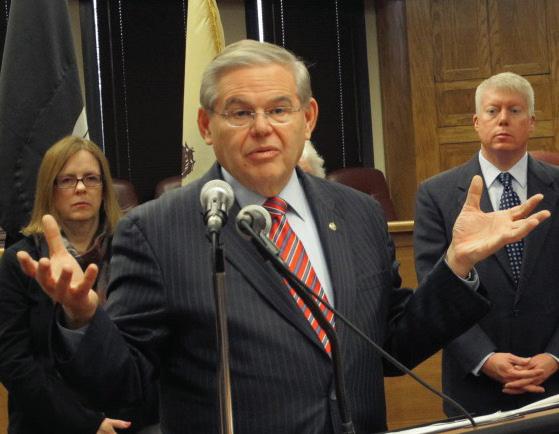
Menendez is accused of disrupting a criminal insurance fraud investigation related to Uribe undertaken by the New Jersey attorney general. In the other cases, the charges are for allegedly improperly pressuring a U.S. Department of Agriculture official to protect a certification monopoly for food experts to Egypt held by businessman Wael Hana and recommending for nomination for U.S. attorney a person Menendez believed he could influence concerning a federal criminal prosecution by the U.S. attorney against the founder of a New Jersey bank, Fred Daibes.
Met in 2018
Hana, a friend of Nadine Menendez, introduced Uribe to Sen. Menendez in 2018. According to the indictment, the defendant Uribe now works in the trucking industry after previously owning his own insurance agency, Inter America Insurance Agency LLC.
Uribe allegedly got caught up with the Menendezes while trying to limit the damage from his insurance fraud case.
In December 2011, Uribe pleaded guilty to third-degree theft by deception and was sentenced to three years of probation by a New Jersey judge. According to the New Jersey attorney general, the former insurance producer for the now defunct Inter America Insurance Agency LLC, admitted that between May 30, 2003, and Feb. 22, 2010, he obtained $76,819 in insurance premiums from seven clients by creating the false impression that he was remitting the monies to insurance carriers to secure commercial automobile insurance. In reality, he did not remit the premium payments to the insurance carriers.
The New Jersey Department of Banking and Insurance revoked the insurance producer licenses of Uribe and his company and ordered him to pay $92,500 in fines.
Mercedes-Benz
In the Menendez affair, Uribe is accused of providing Nadine Menendez
with a Mercedes-Benz in exchange for Sen. Menendez intervening with the state attorney general’s office on behalf of a business associate and an employee. The Uribe associate had been charged with insurance fraud relating to a trucking company, the insurance for which was brokered by the Uribe’s agency. The insurance broker employee, whom Uribe referred to as a relative, was being investigated for allegedly submitting the insurance applications at issue in the criminal case.
According to the indictment, Uribe wrote to Hana in April 2018 that he wanted a deal to “kill and stop all investigation.”
According to prosecutors, Sen. Menendez agreed to attempt to intervene in the cases in exchange for the Mercedes. Uribe provided the $15,000 down payment for the car and arranged for the monthly payments of the $60,000
continued on page 14
OCTOBER 16, 2023 INSURANCE JOURNAL | 13 INSURANCEJOURNAL.COM News & Markets
U.S. Sen. Robert Menendez, D-N.J., speaks at a public hearing on Thursday, Jan. 2, 2014, in Brick Township, N.J. (AP Photo/Wayne Parry)
continued from page 13
balance to be paid.
Prosecutors allege Menendez contacted a senior prosecutor in the New Jersey attorney general’s office “in an attempt, through advice and pressure,” to “resolve these matters favorably.”
According to the indictment, the official in the attorney general’s office tried to “avoid any potential inappropriate influence” in the case by not sharing with the prosecution team that Menendez had contacted him about the matter, and he did not intervene in the matter.
Plea Agreement
Uribe’s associate was able to resolve his criminal prosecution with a plea agreement with no jail time. This resolution was more favorable than the prosecutors’ initial plea offer earlier in the case, according to the indictment.
About six months later, Sen. Menendez attempted to intervene in the investiga-
tion of the employee who was Uribe’s relative. In late October, the Menendezes, Uribe and the relative met for a celebratory dinner, prosecutors claim, citing a photo they obtained apparently showing the three toasting with glasses of champagne.
Uribe's associate resolved his prosecution with a plea agreement and no jail time.
In June 2022, federal agents executed search warrants on the New Jersey home and the safe deposit boxes of the Menendezes. Agents found “certain of the fruits” of the alleged corrupt bribery agreements with Hana, Uribe and Daibes. These “fruits” found in the home included $480,000 in cash — much of it in envelopes, clothing, closets, and a safe — plus $100,000 worth of gold bars, a $75,000 Mercedes-Benz C-300 convert-
ible, and home furnishings, according to prosecutors, who also said they found more than $70,000 in Nadine Menendez’s safe deposit box.
Menendez Reaction
Sen. Menendez has denied wrongdoing and said he believes that “when all the facts are presented, not only will I be exonerated, but I still will be New Jersey’s senior senator.” He said the money found in his home was from his personal savings, not from bribes.
He has rejected calls by fellow Democrats and others to resign his seat. He has stepped down as required as chairman of the Senate Foreign Relations Committee.
Damian Williams, the U.S. attorney for the Southern District of New York, and James Smith, assistant director in the New York office of the Federal Bureau of Investigation (FBI), announced the indictment on September 22.
Businesses Unprepared for Cyberattacks Despite Steady Concern
Cyber risks remain a top concern for business leaders, according to the annual Travelers Risk Index.
The top concerns among 1,206 survey participants are, in order, medical cost inflation (60%), broad economic uncertainty (59%) and cyber risks (58%). Travelers reported that this marked the ninth straight year that cyber threats were one of the top three concerns.
More than half of respondents believe their businesses will inevitably be victims of cyberattacks. And while 90% of respondents expressed confidence that their company had implemented best cyber practices, at least 25% of businesses have not taken what Travelers calls “essential steps,” such as installing firewall or virus protection and implementing data backup and password updates.
“Cyber risks have extremely serious consequences — one attack can weaken
an organization or potentially put it out of business,” said Tim Francis, enterprise cyber lead at Travelers. “Fortunately, there are effective measures that companies can take to address vulnerabilities and successfully manage through a cyber event.”
Travelers reported that 64% of survey participants said they don’t use endpoint detection and response. More than half don’t conduct cyber assessments for vendors or customers’ assets, and only 50% have an incident response plan. Fortyfour percent do not utilize multifactor authentication for remote access.
Based on their responses, small businesses appear even less prepared, despite Travelers sharing that the “likelihood of a cyber event happening is not based on the size of a company. Many times, bad actors target existing vulnerabilities, meaning small businesses could be even more at risk.”
The index also found that security breaches remain the most frequently cited
cyber event, followed by system glitches causing an organization’s computers to go down and employees putting information systems at risk. Theft or loss of control of customer or client records and a company being the target of cyber extortion or ransomware rounded out the list of common cyber events.
“While the business community has come a long way in preparing for and responding to a cyberattack, the survey results show that more can still be done,” Francis added. “A well-designed, multi-layered cybersecurity program can help mitigate the threat of a cyber event, and we encourage organizations to work closely with their independent insurance agent as we all navigate an evolving cyber landscape.”
Travelers found that 66% of small businesses do not have cyber insurance. Meanwhile, 26% of mid-size businesses and 28% of large businesses were found not to have cyber insurance.
14 | INSURANCE JOURNAL | OCTOBER 16, 2023 INSURANCEJOURNAL.COM
News & Markets
News & Markets
Rising Claims Costs Limit US P/C Profitability in 2023: Swiss Re
While the profitability outlook for the U.S. P/C industry this year is mixed, Swiss Re predicts a stronger year in 2024, as premium increases and interest rates improve industry results.
According to the U.S. Property & Casualty Outlook report, the P/C industry hasn’t “reached the inflection point between premium growth rates and claims costs.” Strong rate increases in personal lines, an ongoing hard market in commercial property and high reinvestment yields were offset by the costliest second quarter for natural catastrophes since 2011, persistent inflation and slowing favorable reserve development, the Swiss Re report noted.
Despite higher investment earnings, through the first half of 2023 underwriting losses reached $22 billion, resulting in net income of just $2 billion. Swiss Re’s initial estimate of an 8% return on investment in 2023 has been lowered to 6.5%, with an estimated ROE of 9.5% in 2024.
The premium growth estimate has increased from 7.5% to 9%, with a 5.5% expectation in 2024, driven by growth in personal auto and commercial property. This year, the U.S. P/C market segment saw a considerable improvement on 2022, when the ROE was just 2.4%.
Higher investment returns this year boosted insurers’ profitability, while elevated catastrophe activity is weighing on underwriting results. Severe convective storm claims during the first half of 2023, estimated at $34 billion, drove an estimated $16 billion in extra claims costs.

A 14% jump in total loss costs outweighed 6% net earned premium growth, the report found, resulting in an underwriting loss of $22 billion. The loss was partially offset by net investment income increasing 28% year-on-year.
Stronger underwriting results in the second half of 2023 are expected given there has been no major hurricane thus far and with the anticipation of receding inflationary impact on loss costs, while gains from higher interest rates accrue.
In commercial lines, the report indicates
strong property growth is offset by weak or negative growth in liability lines.
The report outlines a revised 2023 combined ratio forecast to 102. The industry net combined ratio jumped to 107.3 in the second quarter of 2023, with natural catastrophes adding 11.8 points, well above the 10-year average of 6.3, the report showed.
Inflation continues to raise claims severities across property lines. Year-todate, personal lines loss ratio was nearly 23 points higher than commercial lines, as catastrophes affected homeowners more than commercial policies.
Swiss Re’s outlook indicates an expectation that loss severities will ease as average U.S. headline CPI inflation decelerates to the forecasted 4% in 2023 and 2.5% in 2024, “setting the stage for improved underwriting results as rate gains eventually outpace claims costs.”
Property loss costs continue to surge.
In the first half of 2023, homeowners and commercial property claims costs increased 36% and 30%, respectively, year over year, the result of inflation and natural catastrophe losses.
Despite this, both personal auto and homeowners premiums grew by double digits in the first half of 2023, driving strong industry growth of 8.6%.
The homeowners loss ratio is up by 15 points from the same period in 2022, to over 82 — the highest first half in over a decade, Swiss Re said.
Due to insurer pullbacks this year, there is an estimated 20% less availability for insurance options than a year ago.
With respect to personal auto, the line’s 112 combined ratio in 2022 was the highest since the 1970s. With the loss ratio still elevated in 2023, there is a way to go before profitability returns.
In the second quarter 2023, direct premium growth kept pace with loss costs for the first time in more than two years, Swiss Re noted.
“Based on CPI data, statutory rate filings and earnings call commentary, we expect earned premiums growth rates to continue to accelerate while loss costs decelerate,” the outlook stated. However, the auto union strike could be a stumbling block disrupting the supply chain and increasing used car prices.
Commercial lines saw rate increases of 8.9% year-over-year in the second quarter of 2023, slightly faster than the 8.3% gain in in the first quarter of the year.
Property rate gains remain strong, rising 20% after a 21% increase in the first quarter of 2023.
Commercial liability lines profitability is significantly lower, holding steady in the low to high single-digits except for directors and officers (D&O) and cyber, where price gains are slowing.
Swiss Re expects rate increases through 2023 due to inflation and catastrophes putting pressure on claims and operating costs.
OCTOBER 16, 2023 INSURANCE JOURNAL | 15 INSURANCEJOURNAL.COM
Business Moves
The Hilb Group
The Hilb Group has acquired an Illinoisbased property/casualty business, building on the company’s growing presence in the Midwest region and broadening its offerings to include specialized services for fast food franchises and student housing industries.
The Hilb Group did not share the name of the acquired company. The acquisition adds Illinois as a new state to the company’s growing portfolio.
The Hilb Group is headquartered in Richmond, Virginia.
National
James River Group Holdings, Amynta Group
James River Group Holdings Ltd. said some of its subsidiaries have entered into an agreement to sell the renewal rights to their individual risk workers’ compensation (IRWC) business to Amynta Group.
The transaction includes the full operations of the business, including underwriting, loss control and claims, as well as transfer of the employees supporting the business.
The IRWC business will operate under Amynta Work Comp Solutions.

James River said it will not sell any insurance company entities as part of the transaction, which is subject to customary closing conditions and is expected to close at the end of the third quarter of 2023.
East
Arthur J. Gallagher, Eastern Insurance Group
Arthur J. Gallagher & Co., the global insurance brokerage, has agreed to acquire Massachusetts-based Eastern Insurance Group, a subsidiary of Eastern Bank, Gallagher announced.
The move is subject to regulatory approval.
The purchase transaction should close in the fourth quarter of this year.
Eastern Insurance, based in Natick, offers commercial property/casualty insurance and personal lines products and employee benefits consulting.
Gallagher said that under the agreement, it will acquire the Eastern Insurance assets for consideration of $510 million net of agreed seller-funded expenses.
Eastern’s pro-forma revenues for the 12 months that ended in June were $104 million.
Eastern President and CEO Tim Lodge and his team will remain at their current offices, and will report to Patrick Kennedy, head of Gallagher’s Northeast retail property/casualty brokerage operations.
Midwest Origami Risk, Dais Technology
Origami Risk has acquired Chicago, Illinois-based Dais Technology, a provider of no-code insurance technology.
The acquisition increases Dais’ market reach and client support capabilities and expands Origami’s suite of property/ casualty insurance solutions for managing general agents (MGAs), insurers and reinsurers.
Terms of the transaction were not disclosed.
Dais will operate as a subsidiary of Origami and will continue to be led by its co-founders Jason Kolb, Aaron Larson and Milos Dedovic.
Founded in 2016, Dais Technology offers a SaaS insurance platform with API connectivity for streamlined policy handling, product management and sales. The open platform enables superior speed-to-value with minimal upfront implementation and the ability to create new insurance products in weeks.
South Central Risk Strategies, orchestrateHR, Ebenconcepts
Risk Strategies has acquired human resources and employee benefits specialist orchestrateHR Inc. and its affiliate, Ebenconcepts Co., and its affiliate (doing business as eBen Benefits).
Also included in the transaction were the company’s specialty operating subsidiaries, Employers Direct Health and Employers Direct Administrative Solutions.
Terms of the deal were not disclosed. Based in Dallas, Texas, with offices in nine states and a family-owned history tracing back over 50 years, orchestrateHR is a provider of holistic employee benefits solutions.
In conjunction with its associated operating groups, it offers a broad range of services, including human resources and technology consulting, third-party administration (TPA) and payroll and associated administrative outsourcing services.
Established in 1999 as an orchestrateHR affiliate, Ebenconcepts Company is an HR consulting and custom employee benefits brokerage firm with offices throughout the United States. One of the largest independent benefits agencies in the Southeast, eBen works with employers of all sizes and supports a robust Medicare and ACA marketplace. eBen is also a managing general agent (MGA) able to provide preferred access to a comprehensive suite of employer-funded and voluntary insurance products for clients of all sizes.
16 | INSURANCE JOURNAL | OCTOBER 16, 2023 INSURANCEJOURNAL.COM
Southeast Oakbridge Insurance Agency, Audax Private Equity
Atlanta-based Oakbridge Insurance Agency, known for its rapid growth and acquisition of agencies across the Southeast in recent years, has itself been purchased by the private equity firm, Audax Private Equity.
Terms of the deal were not disclosed but according to the acquisition announcement, the transaction includes the sale of Corsair Capital’s investment in Oakbridge.
Corsair invested in Oakbridge when it was founded in 2020 by Robbie Smith through the combination of four insurance agencies.
Smith, CEO of Oakbridge, is an insurance agency and acquisition specialist who once worked with the broker Hamilton Dorsey Alston Co. and with Reagan Consulting. He and his management team will continue to maintain a significant ownership stake in Oakbridge.
Oakbridge, one of the largest privately owned agencies in the U.S., has been ranked as a Top 100 brokerage by Insurance Journal. It has acquired multiple agencies in the South in the last three years, following a partnership model that provides capital, resources and accelerated growth plans to the agencies.
Audax Private Equity, based in Boston and San Francisco, calls itself a capital partner for middle-market companies. The company said it has some $18 billion in assets under management. It was founded in 1999 and has invested in more than 1,200 acquisitions, according to the announcement.
Piper Sandler investment bank served as financial advisor to Oakbridge Insurance Agency on the sale.
Titan Flood, K2 Insurance Services
Titan Flood Inc., a new managing general agent focused on the private flood insurance market, is starting up in Florida.
Titan Flood, based in Tampa, is being launched by Stephanie Lee, the co-founder and chief operating officer of Neptune Flood, a private flood insurer that started in 2017.
K2 Insurance Services, an insurance
holding company headquartered in San Diego, has agreed to invest an undisclosed amount into Titan and will oversee its long-term strategy with a presence on the board of directors, the companies said.
Titan will utilize artificial intelligence and a Solstice Innovations technology platform to determine risk and eligibility. Homeowners will be able to quickly assess their flood risk, select coverage and purchase flood insurance online or through an agent, the company said.
The Titan website indicates it will be up and running by spring 2024. The coverage will initially be available as a surplus lines product in 15 states.
West
Insurance Navy Auto Insurance
Insurance Navy Auto Insurance is expanding into Las Vegas, Nevada, with its car insurance offerings.
Insurance Navy Brokers opened its first location in Las Vegas, at 3266 Las Vegas Blvd N STE 12.
The new branch in Las Vegas, will offer minimum liability car insurance, full coverage car insurance, and other related services tailored to meet the needs of drivers in North Las Vegas.
Arthur J. Gallagher & Co., Ace Commercial Insurance Center
Arthur J. Gallagher & Co. acquired Corona, California-based Ace Commercial Insurance Center.
Ace is a specialist insurance broker serving the trucking industry primarily in Southern California. Jackie Hoang, Anhdy Nguyen and their team will remain in their current location under the direction of Scott Firestone, head of Gallagher’s Southwest region retail property/casualty brokerage operations.
Arthur J. Gallagher is a global insurance brokerage, risk management and consulting services firm headquartered in Rolling Meadows, Illinois.
World Insurance Associates, Cindy Elbert Insurance Services
World Insurance Associates LLC has acquired Cindy Elbert Insurance Services
Inc. of Peoria, Arizona.
Cindy Elbert Insurance Services was founded in 1982 to offer professional services designed to assist ambulance providers with their insurance needs.
World Insurance Associates is headquartered in Iselin, New Jersey. It provides individuals and businesses with products and services across personal and commercial insurance, employee and executive benefits, retirement and financial services and human capital management services.
Arthur J. Gallagher, Hartley Cylke Pacific Insurance Services
Arthur J. Gallagher & Co. acquired Hartley Cylke Pacific Insurance Services Inc. in San Diego, California.
Michael Hartley, John Cylke, James Hawes and their team will remain in their current location under the direction of Scott Firestone, head of Gallagher’s Southwest region retail property/casualty brokerage operations.
Hartley Cylke Pacific Insurance is a retail insurance broker specializing in transportation for clients throughout California and Arizona.
ALKEME, F&I Agency
ALKEME acquired the F&I Agency in Thousand Oaks, California.
The F&I Agency serves the western U.S. Based in Ladera Ranch, California, and backed by GCP Capital Partners, ALKEME provides property/casualty, benefits, surety, risk and wealth management services.
Inszone, Sanfilippo & Sons Insurance Services
Inszone Insurance Services has acquired LLC in San Jose, California.
Sanfilippo & Sons was founded in 1960 by Roy Sanfilippo.
Founded in 2002 and headquartered in Sacramento, California, Inszone is an insurance brokerage firm that provides property/casualty insurance, along with employee benefits solutions. The firm has 40 locations across California, Arizona, Colorado, Illinois, Michigan, Missouri, Nevada, New Mexico, Oregon, Texas and Utah.
OCTOBER 16, 2023 INSURANCE JOURNAL | 17 INSURANCEJOURNAL.COM
National
The Independent Insurance Agents & Brokers of America (Big “I”) installed Michigan’s Mike McBride, president of Mason-McBride in Troy, as the 2023-2024 chairman at the recent Big “I” Fall Leadership Conference in Grand Rapids, Michigan.
With over 35 years of experience in insurance and financial services, McBride is the former Michigan director on the national association board. He previously served as chair of the Trusted Choice board of directors and, more recently, as its executive committee liaison. He has also been a member of the technical affairs committee. He was elected to the Big “I” executive committee in 2017.
Todd Jackson, McGowan Insurance Group, Indianapolis, Indiana, was sworn in as Big “I” chairman-elect, and Lou Moran III, Inter-Agency Insurance Service, Knoxville, Tennessee, became vice chair.
McBride succeeds chairman John Costello, senior vice president at USI Insurance Services in Rochester, New York, who will remain on the Big “I” executive committee for an additional year as immediate past chair.
Embroker, headquartered in San Francisco, California, appointed Gene Linetsky its new chief technology officer (CTO).

Linetsky has more than 30 years of experience. Most recently, he acted as the CTO of healthcare technology company AllStripes and as CTO of financial technology software company TrueML. He also served as principal at TTM.AI and senior director of engineering at Poynt.
Colonial Surety Co appointed Kevin Grzelak as chief financial officer (CFO).
In his new role, Grzelak will be responsible for assembling a financial team and creating a strategy for exploring potential acquisitions and partnerships. He will also lead the company’s strategic expansion initiatives. Additionally, Grzelak will assume responsibility for overseeing all Generally Accepted Accounting Principles (GAAP) and statutory reporting functions, as well as managing reinsurance agreements.
Prior to joining the Colonial Surety team, Grzelak held the role of chief financial officer – U.S. Insurance and Holding Companies at SiriusPoint.
East
Chris Duble, chief executive officer and client executive at Fred C. Church, announced he plans to retire at the end of 2024.
Duble began his career in 1976 with Chubb Insurance. Following a decade of service on the carrier side, he joined Fred C. Church, headquartered in Lowell, Massachusetts. In 1994, Duble co-founded Fred C. Church’s Education Practice. He was appointed CEO of the firm in 2015.

Sam Daume, Fred C. Church senior vice president and client executive, will assume the role of education practice leader effective Jan. 1, 2024. Daume joined
Fred C. Church in 2009. Daume got his start as an underwriter at Chubb nearly four decades ago.
The Hanover Insurance Group Inc., headquartered in Worcester, Massachusetts, appointed Stephanie E. Seibold president of alternative markets and Arthur J. Barrett president of programs.
Seibold joined The Hanover in 2007 as a middle market underwriter, eventually serving as vice president of underwriting and most recently serving as the chief underwriting officer of specialty property and casualty. She previously served as a commercial underwriter for General Casualty.
Barrett came to The Hanover in 2021 and has served as the company’s vice president of underwriting for its programs business. Previously, Barrett held various leadership roles at Chubb within the company’s programs and brokerage division, as well as positions at CNA.
ReSource Pro, headquartered in New York, New York, named Brittany Boyer vice president of Product.
Boyer has more than 17 years’ experience in the insurance industry. Before joining ReSource Pro, Boyer served as executive director of client strategy at Y Media Labs and product, technology and customer experience director at State Farm.
Distinguished Programs, based in New York, New York, named Ursula Kerrigan as general counsel.
Kerrigan brings over 30 years of legal experience in the insurance space. Before joining
Distinguished, Kerrigan served as SVP and general counsel of the Americas region for AXA XL, a division of AXA. Kerrigan also held general counsel positions at XL Catlin, Valiant Insurance Group and Liberty International Underwriters.
Jenny Wong has joined Ryan Transactional Risk (RTR) as vice president, North American tax insurance.

Wong, based in New York, New York, has 19 years of experience as a tax practitioner, including roles as an in-house tax professional advising on structuring and oversight at HSBC, head of tax strategy at Enstar Group, tax advisor at PwC and as a tax insurance broker at Atlantic Global Risk.
RTR is headquartered in London, England.
Steven Stauss has joined Alliant Insurance Services, headquartered in Irvine, California, as vice president within its Alliant Americas division.
Based in Buffalo, New York, Stauss will work with clients across western and central New York, western Pennsylvania and the broader Northeast region. Before joining Alliant, Stauss was vice president, property/casualty insurance at USI Insurance Services and senior risk advisor at Stahlka Agency Inc.
Midwest
Robert Jacobson has joined Rockford Mutual, headquartered in Rockford, Illinois, as chief operating officer.
Jacobson has over three
18 | INSURANCE JOURNAL | OCTOBER 16, 2023 INSURANCEJOURNAL.COM
People
Jenny Wong
Chris Duble
Sam Daume
decades of property/casualty insurance experience, having held senior as vice president at Liberty Mutual, vice president and chief underwriting officer at AAA The Auto Club Group and most recently as vice president, operations, at Kingstone Insurance Co.
Ohio Mutual Chief Financial Officer David Hendrix will retire from the company effective Dec. 31.
Current Corporate Controller Andrew M. Wallen will assume the role of chief financial officer.
Hendrix joined Ohio Mutual, headquartered in Bucyrus, Ohio, as controller in 2005 and was promoted to CFO the following year. Before his tenure at Ohio Mutual, Hendrix served as forensic accounting manager for the Office of the Ohio Insurance Liquidator, and was an audit manager for Ernst & Young, LLP.
Wallen joined Ohio Mutual as controller in 2022 after serving 15 years at Nationwide Insurance in a variety of accounting and financial reporting roles and as senior vice president, controllership operations director for Huntington Bank in Columbus, Ohio.
Privately held insurance broker, Hylant, made a number of personnel changes.
Alejandro Reyes will lead Ohio-based Hylant’s business risk consulting teams, which help clients manage operational risks. He has more than 10 years of domestic and
international experience in insurance and risk consulting, including captive insurance programs.
Hylant is expanding its presence in North Carolina with new associates and plans to add an office in the RaleighDurham area.
Amber Bodette, an employee benefits executive, will move from the Toledo office.
Becky Mayer, already a resident of Raleigh, recently joined Hylant as an employee benefits executive.


Troy Vermillion also joined as an employee benefits executive.
Grange Insurance Co., headquartered in Columbus, Ohio, named Beth Murphy as chief legal officer, effective Jan. 1, 2024. LaVawn Coleman retires from the post at the end of the year after nearly 34 years with the company.

With Grange for 21 years, Murphy has been with Grange for 21 years, serving in several leadership roles within the general counsel’s office, most recently as senior vice president, general counsel and assistant secretary. Before joining Grange, she was a private practice attorney for several years.
South Central
Brian Montgomery has joined Alliant Insurance Services as vice president within its employee benefits
group in Houston, Texas. Montgomery joins Alliant, based in Irvine, California, with over a decade of sales, benefits and insurance experience. Before joining Alliant, Montgomery worked as a producer at USI Insurance Services, group sales director at OneAmerica and an employee benefits representative at Sun Life Financial.
Alliant also added Nick Bates in it Alliant Americas division as vice president in Austin, Texas.


Bates joins Alliant with 20 years of experience, including roles as vice president at both McGriff and USI Insurance Services, as well as regional director at Bisnow.
Southeast Alliant Insurance Services named Jennifer Dimura executive vice president and national director of pharmacy for its employee benefits group, based in Charlotte, North Carolina.
Dimura, previously vice president and director of pharmacy solutions at a global insurance brokerage, will be responsible for operational leadership and national strategy.
West Insurance Office of America (IOA) named three new members to its western division team based in Encino, California.
Ricky Choi is a senior advisor and leader of IOA’s newly launched Korean

practice. Choi has more than two decades of expertise in
the insurance industry. Before joining IOA, he was a senior vice president and Korean practice leader at The J. Morey Company. He was senior vice president at EPIC Insurance Brokers & Consultants prior to that.
Brian Y. Chu joins IOA in a strategy and business development role, bringing more than a decade of experience.

Before joining IOA, Chu was senior vice president, strategy and business development, at The J. Morey Company, and vice president at EPIC Insurance Brokers & Consultants.
Adam Lopez is a commercial lines producer with more than two decades of experience in safety and loss control, claims management, health and environmental coverage and risk management. Before joining IOA, Lopez was director of loss control at the J. Morey Company.
Kendall Bundy has joined Burns & Wilcox and will lead its San Diego, California, office. Bundy most recently served as a vice president at RT Specialty and also worked as project manager at Fieldwork Network.
Burns & Wilcox is headquartered in Farmington Hills, Michigan.
OCTOBER 16, 2023 INSURANCE JOURNAL | 19 INSURANCEJOURNAL.COM
Robert Jacobson
Beth Murphy
LaVawn Coleman
Ricky Choi
Brian Y. Chu
Adam Lopez
Kendall Bundy
News & Markets
Homeowners Face Rising Insurance Rates as Climate Change
Makes Wildfires, Storms More Common
 By Ken Sweet
By Ken Sweet
Agrowing number of Americans are finding it difficult to afford insurance on their homes, a problem only expected to worsen because insurers and lawmakers have underestimated the impact of climate change, a new report says.
A recent report from First Street Foundation says states such as California, Florida and Louisiana, which are prone to wildfires and damaging storms and flooding, are likely to see the most dramatic increases in premiums. But the fire that destroyed the Hawaiian community of Lahaina on Aug. 8, and the historic flooding that happened in Vermont and Maine in July, also are examples of events that could drive up insurance costs for homeowners in other states.
“If you’re not worried, you’re not paying attention,” said California state Sen. Bill Dodd, whose district includes the wine country counties devastated by the LNU Complex fires in 2020.
First Street estimates, factoring climate models into the financial risk of properties
in its report, that roughly 39 million properties — roughly a quarter of all homes in the country — are being underpriced for the climate risk to insure those properties.
“Some places may be impacted very minimally, but other places could see massive increases in insurance premiums in the coming years,” said Jeremy Porter, head of climate implications at First Street and a co-author of the report.
First Street, a New York-based non-profit, has researched the financial implications of climate change for years. Their research is used by Fannie Mae, Bank of America, the Treasury Department and others for understanding the potential risks to properties.
There are several signs that climate change is taking its toll on the insurance industry. The U.S. homeowner’s insurance industry has had three straight years of underwriting losses, according to credit rating agency AM Best. Losses for the first half of 2023 totaled $24.5 billion, which is roughly what was lost in all of 2022.
“(Climate change) is a problem that is already here,” said Todd Bevington, a managing director at the insurance broker VIU
by HUB. In his 30 years of doing insurance, he said “I’ve never seen the market turn this quickly or significantly.”
Skyrocketing insurance costs are a serious concern for the small town of Paradise in Northern California, which was nearly wiped out by a deadly 2018 wildfire that killed 85 people.
Jen Goodlin moved back to her hometown from Colorado with her family in 2020, determined to help in the town’s recovery. They began building on a lot they had purchased, and moved into their new house in October 2022. In July, she was shocked to receive notice that the family’s homeowner insurance premium would be $11,245 — up from $2,500.
“Our insurance agent said, ‘Just be thankful we didn’t drop you,’ and I said, ‘You did, you just dropped me,’” she said.
Goodlin, a former dental hygienist who is now executive director of the nonprofit Rebuild Paradise Foundation, said hundreds, if not thousands, of people are being hit by these rate hikes in a town being built with updated fire-safe building codes and little if any fuel to burn. She knows a homeowner whose premium is now
20 | INSURANCE JOURNAL | OCTOBER 16, 2023 INSURANCEJOURNAL.COM
$21,000 for a newly constructed home.
Record numbers of Americans are now insured through state-affiliated “insurers of last resort” like California’s FAIR Plan, or Louisiana or Florida’s Citizens property insurance companies. These programs were designed to insure properties where private insurance companies have refused to insure or the price for private insurance is too expensive. Goodlin will soon be one of those homeowners. She said she’s in the process of transitioning to the FAIR Plan.
The number of homeowners covered by California’s FAIR Plan was 268,321 in 2021, almost double what it was five years before. That figure has almost certainly increased in the last two years, experts say. In Florida, Citizens Property Insurance Corp. now has 1.4 million homeowners policies in effect, nearly triple in five years.
In some cases, policymakers have bound the hands of insurance companies, leading to an underpricing of risk. For example, the most a California insurance company can raise a homeowner’s premium by law each year is 7% without involving a public hearing, a process that most insurers want to avoid. Those policies, along with the increased chance of catastrophic events, have led insurers like State Farm and Allstate to either pull out of the California market or pause underwriting new policies.
As a result, California’s FAIR plan, which was created 50 years ago as a temporary stopgap measure for those impacted by riots and brush fires in the 1960s, is now the only option available to homeowners in some ZIP codes.
“We’ve got to find a way to get insurers to get back into the market, to take people out of the FAIR Plan so that we can reduce the risk there,” Sen. Dodd said.
Dodd was one of the key lawmakers trying to negotiate a bill in the final weeks of the state’s legislative session to address the issue. But all sides failed to reach an agreement.
There are likely to be more insurance market failures in the future, First Street’s Porter said, as more insurers simply refuse to underwrite policies in certain communities or go property by property. Comparisons to the National Flood
Insurance Program, which is now $22.5 billion in debt, have become common.
Even the backstop programs are buckling under tremendous losses. Louisiana’s insurer of last resort, Citizens, raised its rates for 2023 by 63.1% statewide to cover higher costs.
This summer, reinsurance companies such as Swiss Re and Munich Re raised their property catastrophe reinsurance premiums in the U.S. by an average of 20% to 50%. Reinsurance brokerage firm Guy Carpenter & Co. said it was the highest increase for reinsurance rates since the year after Hurricane Katrina devastated New Orleans and the Gulf Coast.
“It’s a global problem. Virtually every geography is seeing a repricing of risk,” said Lara Mowery, global head of distribution at Guy Carpenter, in an interview.
[See article, From Disorderly to Orderly Reinsurance Renewals — What a Difference a Year Makes, on page 32 for additional insight into the 2024 reinsurance market outlook.]
Reinsurers step in to help cover losses resulting from a catastrophe, so regular insurance companies do not take on all of the risk. In one example of a typical reinsurance contract, a $20 million contract could require the insurance company to cover the first $10 million in claims and the reinsurer to pick up the other $10 million.
Mowery added that many reinsurance firms now have resources dedicated to studying the impact of climate change on how to price catastrophes.
There have been other factors impacting the insurance industry, as well. Inflation has made the cost of repairing homes pricier and home prices remain near record levels. A labor shortage means getting damaged homes repaired may take longer, requiring insurers to pay for temporary housing for policyholders longer.
In short, an industry whose business model is calculating risk based on what happened in the past is increasingly unable to do so.
“You can no longer rely on 100 years of wildfire data to price risk when the unprecedented has happened,” Mowery said.
While the intensity of wildfires, floods
and storms can vary from year to year, the trend lines in these models point to more wildfire activity, as well as more intense storms, all likely to result in more catastrophic amounts of damage that insurance companies will have to cover.
Factoring in climate models and acres estimated to be burned, First Street estimates that by 2050, roughly 34,000 homes will burn down because of wildfires every year.
Going forward, it may become more necessary for potential homebuyers to look at the cost of insuring the property they are looking at before locking in a mortgage rate, due to the potential for significant rate hikes in the future.
“It used to be homeowner’s insurance was an afterthought when you are looking at buying a property. Now you’ll really need to do your research into what risks there may be in that property in the coming years,” Bevington said.
Copyright 2023 Associated Press. All rights reserved. This material may not be published, broadcast, rewritten or redistributed. AP reporters Adam Beam and Janie Har contributed to this report.
Fla., Aug. 31, 2023, one day
the passage of Hurricane Idalia. Americans nationwide face hefty increases in their homeowners insurance premiums in the coming years, a report by the First Street Foundation said on Sept. 20, as climate change intensifies floods, wildfires and storms in ways insurance companies are simply unable to keep up with.
(AP Photo/Rebecca Blackwell, File)

OCTOBER 16, 2023 INSURANCE JOURNAL | 21 INSURANCEJOURNAL.COM
A cottage belonging to the Ellison family teeters over a canal, alongside the remnants of the family’s destroyed business, Ed’s Baithouse and Marina, in Horseshoe Beach,
after
Special Report: Best Agency to Work For
Levitt-Fuirst: 'Good People Doing the Right Thing'
By Allen Laman
One employee said they felt heard by leadership. Another praised their knowledgeable coworkers for treating them with respect. A third, a longtime insurance industry veteran, said the positive work experience they’ve had at Levitt-Fuirst Insurance & Bonding has “reinvigorated my career, and I feel like I’m 20 again.”
Now, that’s a perk.
In responses to Insurance Journal’s annual Best Agencies to Work For survey, many of the Tarrytown, New Yorkbased agency’s employees commended Levitt-Fuirst for its open-door management style, insurance expertise and community-building efforts.
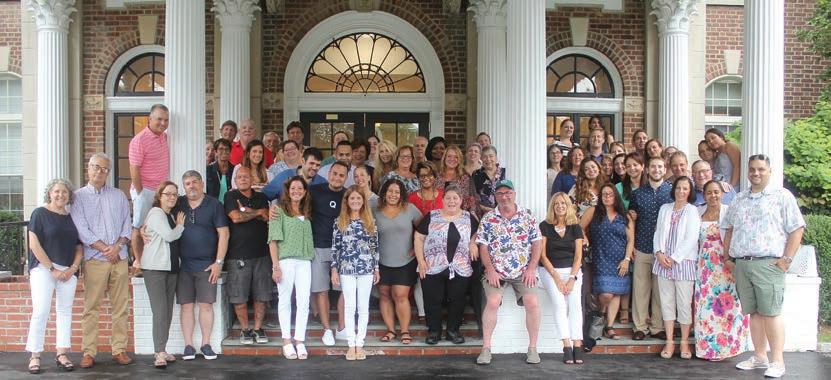

The feedback propelled Levitt-Fuirst to earn the competition’s Silver award for the East region. “I think it’s confirmation that we’re doing something right during perhaps the most challenging employment environment in the past 20 years,” said Jason Schiciano, co-president of Levitt-Fuirst. “And it’s evidence that our employees appreciate the steps that we’re taking to … continue to make (Levitt-Fuirst) a family-oriented company where we truly care about our people.”
Founded in 1969, Levitt-Fuirst employs 75 people and takes pride in its staunchly independent status. Construction companies and real estate operations make up most of Levitt-Fuirst’s clientele. The agency focuses on highend personal lines insurance, general business policies and

surety bonding, as well.
“Our goal is to provide boutique, curated insurance services for our clients,” Schiciano explained.
Levitt-Fuirst is also the group manager for two New York State Insurance Fund workers’ compensation safety groups, offering group discounts on workers’ comp insurance for construction contractors and real estate owners. The safety groups were an early catalyst for Levitt-Fuirst’s growth, and they continue to represent a unique insurance offering that supplements other lines of property/casualty insurance and bonding products offered.
Schiciano believes LevittFuirst exemplifies team culture. Leadership makes an effort to show employees they are appreciated. The company has a spirit team that plans outdoor movie nights and trivia contests, and family members are invited to a pool party in the summer and a holiday party near the calendar’s end.
“Really, there are so many team-building opportunities that we all seem to know each other well enough to be friends as well as co-workers,” one survey respondent shared.
Levitt-Fuirst also participates in community service efforts at food pantries and fundraises for local 5K run and walk events. The agency has a fund in memory of employees who have passed away that provides monetary grants to employees and families for education, medical and family care expenses. The company’s year-end bonus structure includes all staff on the same percentage basis.
“I came from a small agency bought by a larger one, so I can appreciate a small company who understands the dynamics of everyone having to get along,” one respondent wrote. “They understand work-life balance and actually taught me to appreciate it. After 32 years in one place, I didn’t expect to make new friends, and I
absolutely did, and they will be lifelong friends. These are just good people doing the right thing.”
Schiciano’s advice to agency leaders is to be transparent and to engage in dialogue with their employees.
“I think that now more than ever, it’s critically important to make sure that your team, your staff, knows that they’re not taken for granted,” he shared. “It’s important to acknowledge accomplishments — even small accomplishments — along the way, and it’s important to show evidence and make decisions that allow your staff to know that you actually care about them more than just as an employee.”
22 | INSURANCE JOURNAL | OCTOBER 16, 2023 INSURANCEJOURNAL.COM
East
Levitt-Fuirst Insurance & Bonding Tarrytown, New York
Employees at Levitt-Fuirst Insurance & Bonding commended the agency for its open-door management style, insurance expertise and community-building efforts.
Special Report: Best Agency to Work For
Powers Insurance & Risk Management St. Louis, Missouri
Powers Insurance & Risk Management: Building A Family-Driven Culture of Success
 By Ezra Amacher
By Ezra Amacher
As a multi-year winner of Insurance Journal’s Best Agency to Work

For award, J.D. Powers of Powers Insurance & Risk Management doesn’t lose sight of what the honor represents to the St. Louis, Missouri-based company.
“The fact that it’s not a flash in the pan, it’s consistent,” said Powers. “As the CEO, I don’t have much ability to get feedback as far as how I’m doing as a leader so it’s pretty much the best feedback I could possibly receive.”
A family-driven culture of finding the right people, identifying employees’ strengths, and reinvesting in the company makes Powers Insurance one of the top-rated agencies year-over-year. The agency, which provides personal and business insurance, surety, risk management and employee benefits, earned the 2023 Silver award for the Midwest region.
Employees expressed satisfaction with compensation, work-life balance and communication between team members, making it a place where they are proud to work.
“This company, while seeing tremendous growth, still sticks to its core values as a truly family owned and operated entity,” one employee said.
As CEO, J.D. Powers credits the company’s growth to its rigorous hiring process of finding people who are interested in building a long career at the agency. Since 2008, Powers
and its sister company, Valley Insurance Agency Alliance, have grown from nine employees to 74.
“In this tight labor market, it’s been difficult to remain patient during the hiring process, but we really just overcommunicate, set expectations so people understand why we have such a thorough process,” J.D. Powers said. “We’re looking to make the right hire for them to ideally be here the rest of their career.”
The agency conducts at least three rounds of interviews and, depending on the position, two or more assessments. The agency relies on feedback from department managers and other employees before making a hiring decision. By doing their homework in the hiring process, agency leaders are able to identify people who are almost “always more talented and smarter than us,” J.D. Powers said.
The agency acknowledges it sometimes gets the seat wrong with a new hire. So, employees
are given the opportunity to move around within the company to find a role where they can succeed.
“They created a new position for me just 9 months into my employment, allowing me to excel and have a mutually beneficial place within the company,” one employee said.
Employees also have the freedom to share ideas, questions and concerns, and agency leaders hold a round-table to address problems in real-time. Open communication and trust enables the agency to grow at a healthy rate with a healthy culture, said J.D. Powers.
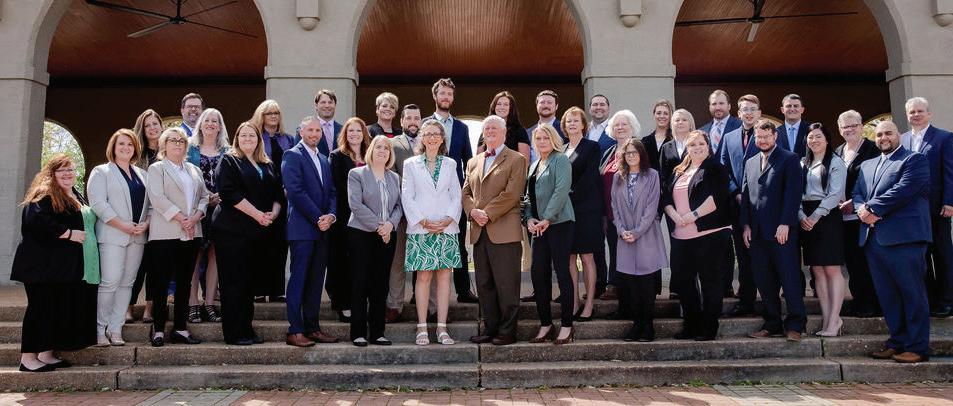
“The floor is always open and we are able to contribute ideas, express concerns, and offer opinions,” one employee said. “In return our contributions are not only heard, but valued, considered and often implemented if they make sense to the whole team.”
Several employees remarked that the company fosters a family-oriented culture that comes with benefits like an
office nap room, a nursing room and a stretch therapist. Powers also offers employees full health benefits and agency-paid $50,000 life insurance.
As the agency has scaled its business in recent years, the owners have been conscientious about reinvesting profits into the company’s people and technology.
“The insurance industry is one of the most valuable types of business you can own, and there’s a reason why private equity wants to buy all of us,” said J.D. Powers. “I would just encourage people to keep working really hard through this hard market, investing the amount of money that’s required to help them continue to get to the next level and not give up and sell to private equity or national agencies.”
OCTOBER 16, 2023 INSURANCE JOURNAL | 23 INSURANCEJOURNAL.COM
Midwest
The team at Powers Insurance & Risk Management.
Special Report: Best Agency to Work For
South Central
Core Values Drive CoVerica to Succeed
 By Ezra Amacher
By Ezra Amacher
At CoVerica Insurance, employees live by four precepts: Die to self (i.e., set aside your pride, biases, prejudices and personal history); Actions sought to support the best interests of all involved; Do the right things for the right reasons; and Conduct open and honest dialogue.
The precepts are more than just a slogan. They shape the company’s culture and philosophy. Employees say the agency lives by its word, offering workers a place where they can find long-term professional success by abiding by the company’s core principles.
Workers also praise CoVerica for providing competitive compensation and benefits, promoting employee growth and training, and actively supporting the community.
Employees at CoVerica successfully nominated the company for Insurance Journal’s 2023 Best Agency Work For — Silver award winner for the South Central region. The


Dallas-based agency, which turns 40 this year, specializes in commercial, personal and life/ health insurance solutions.
“It feels like a validation that what we’ve been doing is the right thing to do be doing,” Mike Sterlacci, founder of CoVerica, said of his employees’ actions. CoVerica is a big believer in the whole person, Sterlacci said, a sentiment shared by its employees.
“You could be an intern or you could be an executive and the door is always open,” said Garrett Cooper, director of technology innovations at CoVerica. “And it’s life, it’s not just work.”
“I feel like CoVerica really cares about me as an individual, and not just worker #72,” an employee wrote. “They really are thinking about their employees, and how they can make everyone’s present and future lives better.”
One way CoVerica ensures that employees are well situated for success is by using Culture Index, which explores a workers’ personality to understand what drives them.
CoVerica Dallas, Texas
The objective is to find a role that matches an employee to their strengths.
CoVerica meets with members one-on-one annually to review their Culture Index survey and address whether any changes need to be made.
“Have always had a positive experience with these,” one employee wrote. “Always gotten good salary bumps and performance feedback is very constructive.”
Several employees commended CoVerica for its open and consistent communication. The transparency extends beyond office walls to how the company sells insurance.
“The watchwords at CoVerica are to be Open and Honest — in every aspect, in all dealings, with everyone we come in contact with,” one employee wrote. “Every decision asks one question — is the decision good for all parties involved? Only if it is, should we move forward. This is rare in a business world where so many companies seek to win in a transaction.”
CoVerica employees also
praise the agency’s compensation and benefits. These include tuition reimbursement, full funding for certifications, generous PTO, a 401k plan and an employee stock program. Additionally, CoVerica’s office includes a gym with personal trainers, a social deck and a full kitchen, as well as workplace chaplains.
“They really are thinking about their employees, and how they can make everyone’s present and future lives better,” one employee wrote.
CoVerica and its employees are in turn highly motivated in giving to local fundraising and volunteer initiatives. The agency’s charity arm, CoVerica Cares, donated $40,000 last year.
“Our values of empathy, positive impact, helping others, facing challenges, and unwavering integrity are evident in our team,” said an employee.
Sterlacci encourages other agency owners to locate their North Star and understand what success means to them.
“What is it that you’re working for? Why is that you get up and go to work every day? And then when you can figure that out as an owner, then you’re clear about that to your staff, so you’re clear about where you’re coming from and where you’re going,” he said.
24 | INSURANCE JOURNAL | OCTOBER 16, 2023 INSURANCEJOURNAL.COM
CoVerica employees say it lives by its word.
Special Report: Best Agency to Work For
Ellis Insurance Agency Charleston, West Virginia
Growing the Business Is a Team Effort at Ellis Insurance Agency
By William Rabb
When Insurance Journal called Danielle Ellis, principal at Ellis Insurance Agency in Charleston, West Virginia, with the news that the agency had been named one of the Best Agencies to Work For in the Southeast, an office manager said she was out of the office, “growing the business.”
That seems to be the key to the Ellis agency’s success in recent years — a growth plan that involves the agency team members in business development, continuing education and, really, most major decisions, Ellis said.

“My team means the world to me,” she said. “I feel ‘seen’ as a female agency owner in growth mode, four years into my tenure here.”
What makes the Ellis agency a great place to work “is that we posture and immerse ourselves into a culture of continuously learning, whether that be me learning what my team needs and being open to suggestions or for my team always striving to improve their workplace and the customer experience.”
The agency’s 10 employees must agree: The agency was named the 2023 Silver award winner for the Southeast in Insurance Journal’s annual survey. The agency received positive comments from team members, earned a high overall rating and saw strong marks for benefits, working conditions and management.

“I have worked for many
companies over the years and this agency is an actual family to each other,” one employee wrote. “I have never had the open communication or respect and care from any other company.”

The Ellis story is a family story, but one that wasn’t predestined. Danielle’s father, Paige Ellis, founded the agency in 1981. But, growing up, Danielle wasn’t sure if she wanted to enter the insurance business. In college at Marshall University, a voluntary benefits carrier saw her resume. She worked there for several years.
“My father saw that I was good at it and offered me a job in his property/casualty agency,” Danielle Ellis said. “At first, I turned him down because I was uncertain about the future of P&C insurance at that time. A wise mentor advised me to seize the chance to work with my dad and told me I would never regret it. I surprised him and passed my P&C exam, took the job he had offered me.”
Danielle joined the team in 2012. The next year, the agency built an impressive new office building just north of Charleston. It also established a commercial lines department, which added a wide range of

coverages and products for local businesses. That resulted in “exponential growth” for the agency. Paige Ellis retired in 2019 and sold the agency to Danielle in 2020.
Danielle’s best advice to other agency owners: Respect the team. “Empower them with the training and confidence to make risk decisions within a framework you create together,” Ellis said. “Always involve your team in policy development — seek their opinions, brainstorm, and write your agency’s story together.” Another tip: Think ahead and curate the language used when discussing the workplace, to make it more inclusive. Words like “my team” and “my coworker,” rather than “my employees” work best, she noted.
Also, have a policy and procedure developed with input from the team for everything that’s done on a regular basis. That will streamline the workflow and “make decision-making second nature and
not something only the agency owner can do. When your team feels valued and empowered, they not only stay with you — they take excellent care of your customers and work hard.”
Survey comments underscored the team’s appreciation for their agency’s leadership.
“Danielle Ellis is a superwoman,” one team member said. “Working for a woman-owned business has been the sole healthiest work environment I have experienced. She has grown with the agency since the days long before her father retired and she purchased the business from him. She works alongside us and I could not ask for a better agency owner.”
OCTOBER 16, 2023 INSURANCE JOURNAL | 25 INSURANCEJOURNAL.COM
Southeast
Danielle Ellis, right, meets with team members.
Agency Principal Danielle Ellis
Special Report: Best Agency to Work For
West
Mahoney Group Fights Inflation, Boosts Employee Happiness Other Ways Too
By Don Jergler
Ahappy workplace isn’t all about money, but it’s no secret that pay goes a long way to make for gratified employees.
“Salary competitiveness has been the #1 priority,” reads a comment from an employee at The Mahoney Group, an Arizona agency whose employees nominated it as Insurance Journal’s Best Agencies to Work For – Silver award for the West region.


Employees responding to IJ’s Best Agencies survey touched on several of the firm’s attributes in nomination forms, rating the agency highly across many areas. However, pay and reviews were often mentioned as a key element in making the firm a great place to work.
“In the past 18 months, every single non-producer employee has received four salary increases to compensate for the current ongoing inflationary period,” an employee wrote. “The board of directors has gone way above the call of duty to ensure all employees are taken care of during these difficult times.”
Another wrote: “The Mahoney group not only offers competitive salary, but will analyze the economy and offer standard of living raises above and beyond the annual salary reviews.”
The Mahoney Group has 210 employees and 10 offices in seven states. The 108-year-old employee-owned firm reports annual revenue of $64 million.

Its specialties include real estate, hospitality, construction and Native American tribes and their holdings.
Other key elements listed by employees addressed the firm’s culture.
“I have witnessed so many changes especially in the past two and a half years with our new CEO and leadership team,” an employee wrote. “The type of new culture presented to the agency is that of caring for the well-being and success of all of the employees and to take care of our clients. I feel like my personal, professional and financial well-being is a priority for the leaders of our organization.”
Some wrote that they “feel like they matter,” and they are “part of a team,” while others wrote about just how important a feeling of belonging is at Mahoney Group.
“Leadership has created
a culture of people before profit,” an employee wrote. “The culture is strong, and the revenues reflect the commitment to our people and clients. Producers are given great latitude and freedom to execute. Micromanaging does not exist. We are an ESOP, so all have a vested interest in supporting one another, regardless of insurance lines.”
Steve Goble, chairman, CEO and president of The Mahoney Group, joined the firm in 1992 after his family’s insurance agency, Goble & Associates, was acquired by the brokerage.
“Our company is about our people,” Goble said.
That philosophy has been honed over the last few years, after management “looked in the mirror” and conducted an anonymous poll among employees to find out what was and wasn’t working.
“We’re entrusted with our people for 40-plus hours a week. We thought ‘How do we positively impact their lives?’ Compensation was a piece of that,” he said.
They realized that inflation pointed to a key way to impact their employees.
“You can have a warm and fuzzy environment, and if you’re not taking care of your people, (compensation is) a basic need,” he said.
To help battle the bite inflation was taking out of employee pockets, the firm gave multiple increases last year of roughly 11.5%, not including compounding, and another 4% this year.
Compensation, culture and other of the firm’s attributes, translate into employees wanting to stick around.
“I’ve been earning a paycheck for over 40 years, and I’ve had probably 10 different employers in that time,” an employee wrote. “Most of those organizations were good people doing good things and I was happy. The Mahoney Group tops them all! This organization has a heartbeat and leads with it. Trust, support, autonomy, fairness, ethics....I could go on. I wish I had found them 40 years ago, but I’m grateful to be here now!”
26 | INSURANCE JOURNAL | OCTOBER 16, 2023 INSURANCEJOURNAL.COM
The Mahoney Group Mesa, Arizona
Four of the firm’s newest partners from left to right: Insurance Advisor Joe C. Steiner, Client Services Vice President Morgan Scott, and Insurance Advisors Cord Whiting and Jake Sanders. Their partnerships were announced at an annual retreat in Prescott, Arizona, for the sales team. The firm now has 25 partners.

&
Report Examines 10-Year California Workers Comp Payment Trends

Average paid losses on California workers’ compensation lost-time claims fell immediately after legislative reforms of SB 863 took effect a decade ago, but then gradually increased up until the pandemic hit, according to a new study.
The California Workers’ Compensation Institute shows the increase puts average paid losses on claims at all valuation points within 60 months of injury above their post-reform lows with only the most developed data on older claims – 72-month data on accident year
UNLOCK THE POWER OF OUTSOURCING WITH STAFF BOOM



Outsourcing
2016 claims still showing declines in loss payments in the wake of the sweeping 2012 reforms.
Using data from CWCI’s Claims Monitoring Application on nearly 570,000 indemnity claims for injuries that occurred during the 10-year span ending in December 2022, the study tracks average paid losses at six, 12, 24, 36, 48, 60 and 72 months post injury. It breaks out the results by accident year to identify growth trends.
In addition to average total losses, the study notes the average medical and indemnity payments at each level of development and compares the loss payments for claims from five industry sectors and from different regions of the state.
According to the CWCI study, average total paid losses within the first year of injury fell immediately after the 2012 reforms took effect but bottomed out in AY 2014 and started to trend up in AY 2015, continuing to increase through AY 2020. Average 24-month loss payments bottomed out in AY 2016, then trended up through AY 2019, the latest year for which 24-month data are available.
For the first time in seven years, the six- and 12-month average paid losses fell slightly in AY 2021 (the second year of the pandemic) while the six-month payments on AY 2022 claims edged up slightly, so average total losses in the initial months after injury have changed little since the pandemic began.
W2 | INSURANCE JOURNAL | OCTOBER 16, 2023 INSURANCEJOURNAL.COM
OPTIMIZE YOUR OPERATION ATTRACT, RETAIN TALENT REDUCE LABOR COSTS, SAVE MONEY MAXIMIZE EBITDA INCREASE PRODUCTIVITY UNIFORM NAMING FUNCTIONS AND PROCEDURES WWW.STAFFBOOM.COM REQUEST A CONSULT TODAY, CALL US AT (877) 449-0145 COME VISIT US AT BOOTH 100
back-office tasks now more than ever is the path to growth and greater profitability. Here’s why:
News
Markets

NEW & IMPROVED CA SL-2 FORM (Diligent Search Report) COMING SOON slacal.com Like technology, everything evolves. TM
News & Markets
dangerous machinery, assigned minors work hours that violated federal law, and failed to pay their employees regularly, including by issuing hundreds of bad checks and illegally keeping tips left by customers.
The Labor Department also charged that the Mezas coerced employees in an attempt to prevent them from cooperating with its investigation and that an associate, Hamza Ayesh, played a role in those efforts, including threatening an employee who complained about receiving a bad check.
The Mezas did not admit to threatening or coercing employees, according to Arkady Itkin, their lawyer, who added that they did admit to issuing bad checks and violating some labor standards. He added that Ayesh did not admit to threatening an employee, but agreed to settle what Itkin called a “he said, she said situation” to put it to rest.
Court Orders Subway Franchise Owners in California to Pay Workers Nearly $1M

Afederal court ordered the owners of 14 Subway locations north of San Francisco to pay employees nearly $1 million in damages and back pay, and also to sell or shut their businesses,
with any sale proceeds going to the Department of Labor.
Federal investigators said franchise owners John and Jessica Meza directed children as young as 14 to operate
Itkin added that the Mezas are people of modest means who are very unlikely to be able to pay the sum agreed to in the court order. “The settlement agreement might make it look like they`re just going to cough up a million dollars,” he said. “It's not going to happen.”
Copyright 2023 Associated Press. All rights reserved.
Warrant Issued for Former Washington Lawyer Accused of Stealing Insurance Settlement
ABothell, Washington man was added to Insurance Commissioner Mike Kreidler’s Insurance Fraud Most Wanted list.
Clinton Jonathan “Sonny” Behrends failed to appear at his arraignment after being charged by the King County Prosecutor’s Office with two counts of first-degree identity theft and one count of first-degree theft. A bench warrant was issued for his arrest on August 24.
On July 2, 2021, the Insurance Commissioner’s Criminal Investigations Unit received a phone call from one of Behrends’ former clients, who stated that he was injured in a serious vehicle collision in 2017, after which he hired Clinton Behrends as legal representation.
In 2019, the client went online and
learned that USAA had settled his claim in 2018 for $150,000. The client contacted Behrends about the settlement, and Behrends offered to pay him $7,000.
The client said they had agreed to him receiving $100,000 with Behrends receiving $50,000 for representation, and Behrends’ later offer was unacceptable. Behrends paid the client $6,000 but reportedly absconded with $94,000.

CIU opened an investigation and discovered Behrends reportedly forged the client’s signature. Detectives obtained a search warrant for Behrends’ bank records and found he had received a check from USAA for $150,000 in July 2018. Behrends
then transferred most of the money to his own personal account.
Behrends was investigated by the Washington State Bar Association and surrendered his license to practice law in lieu of being disbarred.
W4 | INSURANCE JOURNAL | OCTOBER 16, 2023 INSURANCEJOURNAL.COM
My New Markets
Auto Parts Insurance Program
Market Detail: Alliant Insurance Services LLC offers a specialty program supporting the automotive aftermarket manufacturer, distributor, retailer and installer with property and casualty insurance products exclusively offered to the specialty equipment industry. Coverages include general liability (including product liability), product recall, full suite of property coverages including buildings, contents, business interruption and mobile, commercial auto, workers’ compensation, as well as excess and umbrella. Has pen, appointment required.
Available Limits: Not disclosed.
Carrier: Not disclosed.
States: Available in all states except Hawaii and in the District of Columbia.
Contact: Franco Ganino; insurancequote@ alliant.com; 800-390-9099.
Snow Plow Liability Program
Market Detail: BlindDesk Insurance Services offers a snow plow liability program. Products and limitations vary per state, as well as minimum premiums. Can potentially package with other operations. $1 million minimum premium; $2 million maximum premium.
Available Limits: Not disclosed.
Carrier: Non-admitted; rated B+. States: Available in all states plus District of Columbia.
Contact: Phil Duncan; phil@binddesk. com; 619-684-3851.
Explosives

Market Detail: Nobel Insurance Services, a division of the Lancer Insurance Co., has provided a quality insurance program focused on meeting the needs of the commercial explosives industry for more than a quarter of a century. Nobel provides general liability, automobile and excess liability coverages to manufacturers, distributors and users of explosives designed for the construction and mining industry.
Limits up to $10 million. Excluded classes: pyrotechnics, demolition and munition haulers. Has pen.
Available Limits: Up to $10 million.
Carrier: Lancer Insurance Co.; admitted; rated A-VIII by AM Best.
States: Available in all states plus District of Columbia.
Contact: Charlie Pollard; cpollard@lancerinsurance.com; 800-766-6235 x4121.
Umbrella/Excess Liability
Market Detail: Next Insurance offers umbrella/excess liability coverage, available as an add-on to its general liability product. Broad appetite with over +1,300 professions available; quote and bind online for businesses up to $5 million in annual revenue; direct bill, automatic renewal, flexible payment options; no trailing documents needed to bind. Target professions: auto service and repair; beauty and personal care; cleaning and janitorial; contractors; financial services; food and beverage; retail; sports and fitness. Has pen; appointment required.
Available Limits: $1 million/$1 million or $2 million/$2 million.
Carrier: Next Insurance; admitted; rated A- by A.M. Best.
States: Available in Alabama, Arizona, Arkansas, Colorado, Connecticut, Delaware, Florida, Hawaii, Illinois, Indiana, Iowa, Kansas, Kentucky, Louisiana, Maine, Massachusetts, Michigan, Minnesota, Missouri, Montana, Nebraska, Nevada, New Hampshire, New Mexico, North Dakota, Oklahoma, Oregon, Pennsylvania, Rhode Island, South Carolina, South Dakota, Tennessee, Texas, Utah, Vermont, Virginia, West Virginia, Wisconsin, Wyoming.
Contact: Jessica Gutheil; Jessica.g@ nextinsurance.com; 855-222-5919.
Commercial Cannabis Insurance
Market Detail: Reefer Protector, a specialty insurance managing general agent, offers customized commercial insurance plans for cannabis operations including retailers and dispensaries, cultivators/ growers/processors, manufacturers, distributors and transporters, and tobacco and head shops. Program benefits include
competitive rates; 100% online — no manual apps; same day online quotes — no waiting; instant binding capabilities online. Has pen.
Available Limits: Not disclosed.
Carrier: Admitted, rated A (Excellent) by AM Best* (*state specific).
States: Available in most states plus District of Columbia; not available in Alaska and Hawaii.
Contact: Brian Hannigan; brian@insurehive.com; 586-291-7729.
Habitational — Apartment Program
Market Detail: Greenwood General Insurance Agency offers habitational insurance for apartments only, up to $15 million TIV per location. This program has no building age restriction with additional coverages such as HNOA, equipment breakdown, business income, sewer back up and building ordinance. $5,000 minimum premium — admitted; $2,500 minimum premium — non-admitted; additional insureds can be added at no charge; vacancy rate up to 25%; loss history acceptable (no open claims or habitability claims). Liability $1 million/$2 million with $2 million/$4 million subject to approval on larger accounts over $10,000 in premium; $2,500 minimum premium. Appointment required.
Available Limits: Up to $15 million TIV per location. Liability $1 million/$2 million with $2 million/$4 million subject to approval on larger accounts over $10,000 in premium.
Carrier: Admitted, non-admitted. States: Available in Arizona, California, Nevada, Oregon and Washington. Contact: Dan Harwood; dan@gwgeneral. com; 626-900-0790.
OCTOBER 16, 2023 INSURANCE JOURNAL | 27 INSURANCEJOURNAL.COM
This section brought to you by Insurance Journal's sister website:
Need a Market? Find It. FAST
www.mynewmarkets.com
Special Report: Agency Technology & Insurtech
 By Andrea Wells
By Andrea Wells
Connecting the insurance ecosystem through the power of technology could answer the decades-old problem of duplicate entry for agents. Agents still must navigate through multiple carrier portals to complete a single quote, despite the promise of integrated solutions. Or agents hit barriers trying to utilize agency data when one technology platform simply can’t “speak to” or connect to another platform.
INSURANCEJOURNAL.COM 28 | INSURANCE JOURNAL | OCTOBER 16, 2023
When systems do not connect, the agency is stuck with the burdensome process of manually keeping up with the same information in two places. Brendon Mulcahy, vice president, technology & innovation partnerships at SIAA, believes connectivity remains the biggest barrier for agencies when it comes to implementing and adopting innovative agency technology.
“Connectivity between platforms — it’s an issue,” Mulcahy says. “I think it’ll get better at some point, but it is still one of the biggest pain points in the industry right now.”
Artificial intelligence (AI) shows promise in achieving greater efficiency across the insurance value chain through connectivity.
At the same time, there are those who question the focus and urgency of connectivity given that independent agencies are doing just fine.
Why Advancing Connectivity in the Agency Is Needed
Margeaux Giles, CEO of IRYS, agrees with Mulcahy that connectivity is a priority and decided to try to do something about the lack of connectivity with agency management systems.
As the chief operating officer of OIG Insurance, an independent agency in Tampa Bay, Florida, Giles managed all IT operations and experienced firsthand the shortfalls in what her agency’s management system could do, or not do, because it couldn’t connect with other platforms.
“At every turn I would try to do something and realized, well we’re limited by that, or I would try to run a report, or get analytics on something, and
I was told, ‘No, you can’t do that,’” she said. Other times she would attempt to integrate the agency’s management system with a new insurtech platform.
“And I was told, ‘No, we don’t want to integrate’ … I got so frustrated that I left.”
So she and her agency team decided they were going to build out their own system. Soon after they did, she found other agencies calling her asking for advice.
“That morphed into a consulting role because I started getting calls from my carrier partners and other agents asking what we did,” she said. “So, I opened up a small consulting firm on the side while I was running the agency and we blew up.”
Giles founded GoGiles, a consulting firm focused on technology for the insurance industry in 2017. Within two years, Giles’ consulting work had boomed, bringing in $3 million-plus in sales just on agency consulting.
The same questions always came up, she said. “We kept getting asked for connectivity and we kept getting asked to build agency and carrier APIs.”
[An API, or application programming interface, is a set of defined rules that enable different applications to communicate with each other.]
“These big insurtechs kept missing the mark” when it came to connectivity, according to Giles. So she and her team set out to create a new agency management system that fills this void. That’s how IRYS was born, a cloud-based open API software platform for insurance distribution that focuses on connectivity across agency departments, locations and through various insurance
industry verticals. Giles says by the end of the year, IRYS will have raised close to $10 million in funding.
There is room for improvement in the agency management world, Giles says. What many current technologies do not provide is open connectivity to fully utilize one of the most valuable assets of an agency — its customer data, according to Giles.
For example, with her old system she couldn’t accurately forecast what customers were going to leave the agency and who was going to stay.
“Because we had a CRM and an AMS that were two different systems and there was no crossover,” she said. That made running analytics between those two systems difficult. “Predictive analytics was impossible,” she added.
What pushed Giles and her agency to make the leap and leave their current AMS vendor was realizing that some new insurtech platforms that could help solve a specific agency problem were not available to connect at all.
“There were all these really good insurtech solutions — I call them end point solutions — that were solving one part of a problem like COIs (certificate of insurance) or compliance,” she said. “I would ask, ‘Do you have an API or a file I can export so I can get my data from your system to theirs and back?’” The answer was a firm no, according to Giles. Or the data would only be given in an “unstructured format,” she said. “So, you get all of your data fields, you get all of your data, but it’s all in a different format and there’s no way to map it,” she said.
For IRYS, the number one
priority is to build on APIs, or open connectivity, she said.
“Our model of revenue is not the data, it is the software,” she said. “Software as a service company, we’re a SaaS company, so we don’t charge for data backups, we don’t charge for API access, we don’t charge for documentation, and we don’t shake the filing cabinet before we hand that data over,” she said.
ACT
Not everyone agrees that open connectivity is critical and not all agents want to be technology experts.
What forward-looking insurance companies and agencies are asking for is a truly open environment where all parties share the exact same set of standards and structure, says Chris Cline, executive director of the Agents Council on Technology. These companies and agencies are saying, “We just want everybody to open their stuff up and quit walling off the unique proprietary data.”
That sounds great but part of the problem lies in one of the hallmarks of the independent agency channel, he says. That is differentiation.
Part of what makes an independent agent and an independent agency carrier different are the nuances found within their product, pricing and appetite, Cline says. “I think for us to all differentiate, we probably need to ask different questions, and/or use different rating variables,” he said.
Cline thinks this might be where the future of generative AI can help.
“Maybe AI feeds that and continued on page 30
OCTOBER 16, 2023 INSURANCE JOURNAL | 29 INSURANCEJOURNAL.COM
Special Report: Agency Technology & Insurtech
continued from page 29
it starts to help us, and the systems start to understand where to go to get the data for an agent or the carrier when a standard question set is used to generate a quote or an endorsement request or whatever so that it dramatically reduces or completely eliminates the need for an agent then to go in to two or three different websites.”
Cline admits that while there are many aligned interests when trying to create a more connected industry through technology, there are competing interests impeding that progress, too.
While there may seem “a lot of noise on social media, LinkedIn and Twitter from folks screaming for carriers to open their APIs and for agencies to get on board,” Cline says most agencies don’t really know what that means.
“What I’ve really deduced is that most agencies don’t want to be technology professionals,” Cline says. “They don’t have the capabilities to build that out, that kind of function.”
Most people just want their stuff to work in the morning, he says.
Another consideration — most agencies are already in pretty good financial shape today, he says. “I mean, if you use the Big I’s Best Practices data, agencies are worth more than they’ve ever been and their margins are increasing,” he said. “And so, it’s hard to convince somebody who’s doing that well to change.”
Cline has one utopian thought for the future of agency technology. “This is easy to say because I’m not running a tech company, but build a modular product suite so that
everything that you build works phenomenally together and make it cool enough and easy enough to use,” he said.
He likens this idea to the Apple ecosystem. “You can do a whole lot of cool stuff as long as you’re inside it.” And people just don’t care that they can’t connect outside it.
More Work to Do
Andrew Wynn acknowledges that achieving seamless connectivity with carriers and industry vendors can be a challenge. But he believes that the integration of core workflows like claims, billing and policy management through technology is a critical step in streamlining operations for the industry.
Wynn is co-founder and co-CEO of Ascend, an insurtech and technology firm focused on online tools that modernize all agency bill related operations.
“The progress varies across different segments of the industry, with some carriers and vendors offering more robust integration solutions than others,” Wynn said. “While some agencies benefit from advanced digital platforms, others still grapple with legacy systems and manual processes.”
To truly create a more connected insurance world for agents, brokers, carriers, networks and vendors, the industry needs to prioritize standardization, interoperability, and data sharing — not closed and proprietary systems, Wynn told Insurance Journal. “Only through greater collaboration and technology-driven initiatives can we achieve the level of connectivity that will empower
all stakeholders to thrive in the evolving landscape of insurance,” he added.
One challenge is finding the right platform that everyone can agree on and then making the change, says A. Morris “Mo” Tooker, head of middle, large, specialty commercial, and enterprise sales and distribution at The Hartford.
The Hartford recently announced that it expanded its digital capabilities with new submission and quote APIs, and portal options for agents and brokers who write midsize and large businesses through a partnership with Highwing, Inc., an insurtech focused on providing data management and processing solutions for both brokers and carriers. The new capabilities could save time and increase accuracy, The Hartford says, giving agents and brokers easier access to share submission data and request a quote for general liability, auto, property and workers’ compensation accounts.
Tooker says that finding the right platform with enough interest from both brokers and other carriers is the first step toward better connectivity, at least in the middle market space. Highwing’s other carrier partners include Travelers, Zurich, CNA and QBE.
Another hurdle to overcome is just change management, Tooker says. “You’ve got agents against one wall, you’ve got carriers against the other, and nobody’s really dancing even though everybody’s signed up for the same platform,” he said.
That’s why The Hartford is choosing to invest and experiment through multiple tech avenues, Tooker said. “Our digital capabilities are built on
agent and broker feedback,” he said. Experimenting is critical now. “That’s where we’re at, whether it’s a carrier or an agent, it’s time to get off the sidelines and put a little bit of time and money into this experiment to learn so that we all develop together.”
Benefits
There is tremendous opportunity for those firms willing to experience and succeed in connecting the insurance value chain, according to Ellen Willadsen, chief innovation officer at Holmes Murphy, an independent insurance agency based in Des Moines, Iowa. In 2019, Holmes Murphy leaders helped fund and launch BrokerTech Ventures, a broker-led convening platform and insurtech accelerator program focused on delivering innovation to the insurance broker and overall industry at-large.
“A great opportunity for the insurance industry is to improve the flow of data,” Willadsen added. New innovations around artificial intelligence could help close the gap in connectivity.
“The largest opportunity is if the AI systems are able to talk to each other,” Willadsend said. “The use of AI will (and does) help us today, but there is greater opportunity.”
Some startups have created tools to help with workplace efficiency, she said. A few that participated in the BrokerTech Ventures Accelerator last year include Comulate, Adapt API, and IRYS. But any technology that assists with reducing redundancy and eliminating repetitive tasks should be the focus for the industry as it strives to improve productivity,
30 | INSURANCE JOURNAL | OCTOBER 16, 2023 INSURANCEJOURNAL.COM
Willadsen maintained.
Giles and others agree AI will play a role in the future of agencies. While AI is not new for the industry — it has been used in many insurtech platforms for years — its accessibility to the average person is new, Giles said.
“There are a lot of use cases for generative AI, including training,” Giles said, noting that 40% of the insurance workforce population is retiring, and new people in insurance
will benefit from having a generative AI knowledge center where they can ask questions on workflow or coverages.
There are other use cases involving claims management and policy checking as well, she added. But if that AI technology can’t connect to the agency management system, then how can it help?

Giles admits there have been plenty of other startups with the ambition to solve the connection problem facing
agencies, carriers and vendors in the past. But in her opinion, the missing piece is connecting the agency management system, she said.
“Carriers do invest a lot of money in building out APIs, so they can put APIs around their quote and their bind and their billing,” she said. But if agents’ management systems don’t have APIs and don’t connect then those carriers are building bridges to nowhere, she said.
What agencies really need is to connect with their carriers more efficiently on their current book of business, Giles maintains. “It’s great that we can quote and bind — we love quoting and binding and everybody loves making money — but as an agent, my business model is on retention,” she said. “If I can’t service that account, if I don’t know if they’ve missed a payment or I don’t know that they’ve added a vehicle and I can’t manage the account after I sell it.”
That’s a big problem and it’s something that she’s hoping cloud-based, open API capable technologies can solve. “If we are connected to carriers directly for service API, that would be helpful to the agent,” she said. But even more importantly, connectivity will help the insured, she said.
Understand Agency Goals
Not everyone needs to be a technical expert to know what they need in their agency technology, says ACTS’ Cline.
“So when you think about an agent, most went into insurance because they wanted to be insurance professionals or they wanted to work in the industry but now they have to be a marketing professional, a cyber insurance professional, a
data privacy professional,” he said. “Now we’re telling them they need to be technologists.”
SIAA’s Mulcahy says when trying to streamline efficiency in independent agencies it’s important to remember to go back to the basics.
“First, we tell everyone … and I wish I didn’t need to tell everyone this … but have a website, have a Google profile, and have an agency management system,” he said. “Yes, we still run into people who don’t have these things, unfortunately.”
Mulcahy sees some agencies making mistakes when they do not have a good process for keeping their data up to date, downloaded, reconciled and consistent. “That’s a big problem and I think a lot of people don’t focus on having the process in place by which they use their technology.”
He also sees a sufficient need today for agencies to have a good CRM in place. “I think in this day and age, most people should have one to manage your communications with your current customers, and with your prospects.”
Also, make the move to a paperless and VOIP phone systems if you haven’t done so already, Mulchay added. Both are solid risk management tools for documentation when it comes to agency E&O exposures.
But at the end of the day, Mulcahy stressed, technology is not the goal.
“Technology helps you to achieve a business goal,” he said. Any management system will help in terms of efficiency. “It just comes down to understanding the system and implementing the right processes.”
OCTOBER 16, 2023 INSURANCE JOURNAL | 31 INSURANCEJOURNAL.COM
Closer Look: Reinsurance
From Disorderly to Orderly Reinsurance Renewals — What a Difference a Year Makes
By L.S. Howard
One of the themes at this year’s reinsurance Rendez-Vous de Septembre (RVS) was that reinsurers have rediscovered client need, client interest and have again started to put clients at the center of conversations, according to Dirk Spenner, managing director at Gallagher Re, EMEA.

On the other hand, the big theme of last year’s RVS was that reinsurers had put their interests at the center of the conversations, Spenner said. “I need this, I want that. I can’t do that anymore, and these are my rules,” he said in a recollection of talks with reinsurers during the 2022 RVS.
“[L] ast year it seemed like ‘cat’ was the bad word of the market,” he said during an interview at this year’s RVS in Monte Carlo. “And if you just said, ‘I’ve got some cat business for you,’ they put the phone down on you. So that’s clearly changed.”
The main change from October, November and December of last year is that the reinsurers now have a much better idea about their risk appetite, he explained.
“They provided a commitment to provide quotes, which
again, wasn’t necessarily the case last year,” Spenner said.
Reinsurers have greater confidence to provide a clear commitment of capacity “and they’ve defined where they want to play and what’s off limit,” Spenner said. “And so I think overall that will very likely lead to a much more orderly market.”

This is really core for Gallagher Re clients — that they can go with confidence into the renewal process and will get their programs placed, he added.
“At some point last year, it sort of looked like, okay, well was anyone playing here, guys? And so that’s a big shift in market behavior,” Spenner said.
In pre-RVS renewal briefings, executives from Aon and Guy Carpenter echoed Spenner’s thoughts about the more orderly reinsurance market seen throughout 2023 — after the disorderly January 2023 renewal season — and that
32 | INSURANCE JOURNAL | OCTOBER 16, 2023 INSURANCEJOURNAL.COM
‘[W]e are hoping that the reinsurance relationships that were severely tested between clients and reinsurers at the 1st of January … can be rebuilt and reestablished during the coming year.’
Dirk Spenner
order was also expected for January 2024. At the same time, they agreed that rebuilding reinsurer-cedent relationships was essential.
Through the year, it became a lot more ordered with a lot of competition seen at the topend of programs — a trend that started at the June 1st renewals and is likely to continue, said Andy Marcell, CEO of Aon’s Risk Capital and Reinsurance Solutions, in its reinsurance renewal briefing.

“[W]e are hoping that the
reinsurance relationships that were severely tested between clients and reinsurers at the 1st of January … can be rebuilt and reestablished during the coming year,” he added.
“[C]lients are looking for stability, closer reinsurance relationships as we walk into 2024 and to rebuild a stable relationship in terms of capital management with their reinsurance partners, and that is something that they are uniquely focused on,” Marcell said. “And, of course, they’re very, very interested to see how the reinsurers will react to the renewals coming up at the 1st of January …,” he said, noting that about 45% of Aon Reinsurance Solutions’ global cat placements renew
at January 1.
“We’ll be pushing for reduction in rates in most places where we see competition, if we see there’s more than adequate pricing at the top end of programs,” he said.
Marcell acknowledged, however, there are places in the world that have had losses, so the question is to see how the market reacts to the Turkish quakes, Italian floods and some of the flood losses in the Nordics.
“But in the main, a lot of the volatility and the losses that have occurred have been at the lower end programs where the global insurers, for example, have managed that in their own ways,” he said, explaining that Aon expects to see some
private placements to help cedents manage that volatility. However, he pointed out that there are many types of different insurance companies, regionals and mutuals and nationals in the global insurance market, and the amount of volatility that is now sitting on their balance sheets “is at a place that is challenging for them.”
“So they will be looking to find ways to get more frequency covered to the extent possible at affordable prices. And I expect that to be an ongoing discussion through 2024,” Marcell said.
Return to Profitability
Spenner acknowledged that continued on page 34
OCTOBER 16, 2023 INSURANCE JOURNAL | 33 INSURANCEJOURNAL.COM We’ve got the most to offer. Standalone personal umbrellas with a $1 MM excess UM/UIM option on every quote. Discover the unexpected at PersonalUmbrella.com Admitted carrier, rated A XV by A.M. Best For licensed insurance agents Available nationally. Underwriting criteria varies by state. Visit us online for guidelines. A.M. Best rating effective 09/23. For the latest rating, visit ambest.com. California Insurance License 0D08438
Andy Marcell
Closer Look: Reinsurance
continued from page 33
“there’s still significant risk out there that the reinsurers are covering.”
Reinsurers forced through changes in prices and terms and conditions that helped them create a portfolio that’s much more likely to give them a significant profit, he indicated. “And fair enough, after five years of misery, [that’s why] that push was happening last year.”
The question is, how far should that stretch out, can that stretch out and how much pain “was pushed back to the cedents who now have to carry that risk by themselves,” Spenner said.
Cedents made quite a lot of concessions at the end of last year and throughout this year’s mid-year renewals, which has resulted in reinsurers’ producing outstanding combined ratios and return on equities for the first half of 2023, he said.

It’s fair to say that this is only after six months, “and I’m sure everyone in the reinsurance world wants to see [similar results] after 12 months in order to make it a proper good year,” Spenner added. “But the indicators and the starting points are very good and that obviously changes the content of the conversation.”
Spenner emphasized that Monte Carlo only provides early-toes-in-the-water conversations about how everyone’s doing, but “the ‘truth is in the pudding’ and so we’ll see when the quotes come in, how the
conversations here transfer into reality.”
Increased Appetites
Some reinsurers are showing increased appetites, going into the renewals, based on the market conditions as they stand today, “which is a bit of a change relative to what we’ve seen in prior years,” said Mike Van Slooten, head of Business Intelligence for Aon’s Reinsurance Solutions division.

At the other end of the spectrum, there are some companies that are still managing volatility as well, so this is an environment where the best outcomes are achieved by navigating those risk appetites, he said.
When asked how long the hard market will last, Marcell answered with a laugh: “It depends on where you are.”
He explained that there’s a lot of competition for property catastrophe risks in excess of a 15- or 20-year return period.
The higher up the stack you go, the greater the competition, he said, noting there’s ample capacity and appetite because reinsurers are looking to add that to their balance sheets. However, Marcell did not think there was a significant shift in appetite below 10-year return periods.
While the industry has seen loss activity through a variety of regions such as the earthquake in Turkey, “ceded losses to date remained well within expected loss ratios for the year,” said Tracy Hatlestad, executive managing director
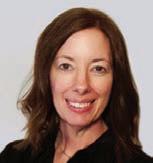
and global property segment leader at Aon.
“Last year, obviously, the discussion around renewals was centered around capacity. And this year we think on both sides of the trade, the discussion should really be centered around differentiation of how you come to market for trading with a specific reinsurer or viewing a specific insurance company,” Hatlestad said.
On the reinsurer side, Aon expects a much more orderly renewal season this year, she said.
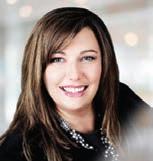
“And the ways that reinsurers will ultimately show up for that is transparency and pricing and meeting quote and authorization deadlines that insurance companies set for 2024 renewals. But for the reinsurers that are looking to really improve relationships and grow in today’s market, there’s definitely an opportunity to differentiate how you can provide value to insurance
companies,” Hatlestad added.
Heading into the January 2024 renewals, Guy Carpenter believes “demand for reinsurance will grow with reinsurers’ willingness to deploy capital also increasing, although underwriting discipline will not subside.
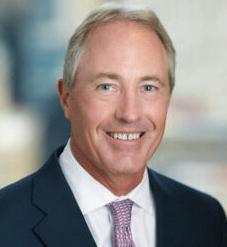
Thorough preparation and thoughtful differentiation will enable cedents to adjust their own approach and leverage a range of solutions to transfer risk into profitable returns,” said David Priebe, CEO of Guy Carpenter, in a pre-Monte Carlo briefing.
Adequate Catastrophe Rates?
Lara Mowery, Guy Carpenter’s global head of distribution, commented: “With the significant adjustments in 2023, catastrophe rates are broadly adequate, but their perceived adequacy may be dependent on the ongoing patterns of loss activity and development.”
34 | INSURANCE JOURNAL | OCTOBER 16, 2023 INSURANCEJOURNAL.COM
Mike Van Slooten
Tracy Hatlestad
David Priebe
Lara Mowery
The total insured large losses for the first half of 2023 currently aggregate to $49 billion, which includes the Turkey earthquake, New Zealand floods and cyclone, Italy floods and US storms, Mowery said.



“These recent losses emphasize the continued importance of individual renewal characteristics and cedent differentiation,” she said, noting that market drivers are expected to extend into next year, as average losses at H1 2023 are 24% above the 10-year historical norm, inclusive of losses from COVID-19 and the Russia-Ukraine conflict.
“While the loss trend for events in excess of a billion dollars is increasing on an annual basis, many of these
























events remain of a size that is largely retained by insurers, particularly as retentions on cat programs have shifted up,” Mowery noted.
In addition, a substantial portion of the 2023 loss activity has been generated by U.S. events “where retention increases were material virtually across the board,” she said.


“Given the loss trends and the resulting challenges in the reinsurance market, many cedents have reshaped their portfolios throughout the last 18 months. This includes rate increases that are still working their way through portfolios, underlying product adjustments such as higher insurance deductibles, and managing concentrations,”



Mowery continued.
Mowery noted that reinsurers are able to respond fairly quickly within a renewal cycle to revisiting the composition of their business, but it takes time for these adjustments to work through insurance portfolios.
“Cedents have now had more time to begin adapting to 2023 market adjustments, and this may play out in a number of ways at Jan. 1, 2024, including cedents funding increased reinsurance purchasing with growing premiums or alternatively mitigating the amount of reinsurance required as a result of more intensive aggregate management,” she said.


Howard is IJ's international editor. Email: lhoward@wellsmedial.com


OCTOBER 16, 2023 INSURANCE JOURNAL | 35 INSURANCEJOURNAL.COM And keep your agency’s unique style, familiar identity, and personalized customer service www.IAAnetwork.com 866-789-9712 INCREASED & Consistent Contingencies OWNERSHIP PERPETUATION Planning & Financing PREFERRED Agency Contracts RETAIN 90% Of Commission DIRECT Access40+ Markets EXPERIENCED Support Sta MAINTAIN 100% Not all markets available in all states
‘Given the loss trends and the resulting challenges in the reinsurance market, many cedents have reshaped their portfolios throughout the last 18 months. This includes rate increases that are still working their way through portfolios, underlying product adjustments such as higher insurance deductibles, and managing concentrations.’
Idea Exchange: Technology
Insurance Technology Is a Driver for Change
 By Susan Hatten
By Susan Hatten
The insurance industry is truly a nexus for innovation. Particularly through the use of technology, it is inspiring to dive into the many ways insurance professionals across the country and the world create real-time solutions for clients and build upon their success. Knowing this, it was clear to our leaders and innovators at Holmes Murphy that there were seemingly endless untapped possibilities when it came to showcasing how insurance is a driver of change and a means to explore the many available paths and opportunities offered to add value to the insurance value chain.
An example of innovation in action was in 2019 when Holmes Murphy and
M3 Insurance co-founded BrokerTech Ventures (BTV) with these very principles in mind. Since then, BTV has served as an innovation hub that brings broker-centric insurtech startups together. The results have been nothing short of impressive, further proving that innovation is a fundamental component of the industry. By providing a space and opportunity for distribution access, stakeholder collaboration and engagement, and access to capital, BTV has proven itself as an important launching pad for many entrepreneurial leaders and provides a proof-of-concept environment for broker-centric products and solutions.
This has certainly held true from Holmes Murphy’s experience of working with some of the most notable super-regional brokerage firms in the nation, including 60 insurtech startups from around the world, spanning the U.S., Israel, and Latin

America. For example, the BrokerTech Ventures accelerator cohort hosts BTV Mania each year beginning in April, allowing select insurtech startups to convene and share strategies, receive funding, and celebrate successes.
Helping insurtech startups identify important risks and reach success benchmarks is essential to propel innovation forward. Leading with this philosophy allows brokers to provide a greater experience and service to clients and ultimately drive costs down, creating a win-win situation.
“Coop-etition,” a concept joining cooperation and competitors, is another philosophical value that BTV has adopted
36 | INSURANCE JOURNAL | OCTOBER 16, 2023 INSURANCEJOURNAL.COM
BTV has proven itself as an important launching pad for many entrepreneurial leaders.
in this space. This principle allows startups to have unique positioning in terms of deal flow as the platform identifies market opportunities and industry gaps to help clients. As we continue, it’s encouraging to partake in the depth and level of expertise, products, and solutions that are being brought forward for the betterment of the insurance landscape and clients.
In fact, we believe technology is helping to unearth solutions that are directly impacting the risk management, healthcare, and benefits decisions that our clients are making each and every day.

A few of the many examples of this and of BTV startups making an impact throughout the insurance value chain are:
• Goldfinch Health — Goldfinch offers a program that works within existing insurance networks to help advocate for patients before, during, and after surgery. The program is aimed at improving the
overall quality and experience of surgery while also reducing costly surgical complications, hospital readmissions, and risks associated with opioid addiction post-surgery.
• TrustLayer— TrustLayer brings to the insurance equation the ability to automate the insurance verification process using robotic process automation (RPA) and artificial intelligence (AI). This provides clients with peace of mind knowing the coverage their business partners have in place is adequate, validated and compliant.

• Broker Buddha— Broker Buddha is the leading digital client engagement platform for insurance agencies looking to improve their client experience. The company simplifies the application and renewal process and enables agencies to impress their clients by delivering a unique digital footprint that is consistent with their brand promise.
• Healthee — Healthee has an AI-powered
platform that delivers personalized and accurate answers to any benefits questions a company’s employees may have within seconds. The platform saves HR teams hours per week while multiplying employee health and happiness.
I believe the future of the independent agency system centers on its ability to stay in the game, with joint leverage of relationships and enriched support by technology and innovation. It’s not easy navigating the road to create solutions, but it’s amazing what can be created when minds are put together to build and grow. That’s exactly what we’re looking to achieve through BTV. We believe by allocating new ideas and collaborating with others, we can enhance the value chain overall and provide solutions to clients to ensure their success.
OCTOBER 16, 2023 INSURANCE JOURNAL | 37 INSURANCEJOURNAL.COM
Hatten is chief marketing officer of Holmes Murphy, and chief operating officer of BrokerTech Ventures.
Commercial Property/Habitational
Multifamily in Peril: The Perfect Storm

longer deemed as profitable for admitted carriers. Properties in other states are certainly not immune to facing the wrath of the current market.
Champlain Tower tragedy also made insurers wary of both the literal and figurative stability of coastal properties.
By Lauren Lieb
The multifamily and rental property industries have faced quite an upheaval over the past few years, the impacts of which are certainly being felt by landlords and property managers. More than one national multifamily publication has stated policyholders are facing an average 30% increase from this time last year. There are multiple factors at play that have led to increasing premium costs and coverage limitations, none of which are expected to stabilize any time soon as premiums are expected to stay high well into 2024.
Unfortunately, the hard market that the multifamily industry is facing is due to a “perfect storm” of conditions. The current hard market has impacted landlords especially hard in states that have faced a mass exodus of many standard insurance carriers in the recent months — for instance, California, Texas, Louisiana and Florida — as they are no

The main culprit for premium increases has been attributed to the increase in both frequency and severity of natural disasters across the country and the secondary perils that follow. The last three years have led to the highest total payout for U.S. insurance carriers in recorded history. Wildfires have ravaged the West Coast, causing many carriers to put restrictions in place for buildings that are not only in, but adjacent to, wildfire-prone areas. Tropical storm frequency has expanded greatly throughout the Gulf Coast and up the East Coast, leading carriers to decide to piece out wind/hail coverage altogether, if they remain at all.
As it stands, Florida is the most difficult state in which to underwrite property, as storm claims have had the most extreme impact on the insurability of Florida as a whole.
Florida has been facing insurability issues not only due to the $10 billion-plus in tropical storm claims over the past couple of years, but the
The actuarial data that historically led to successful predictions in the estimated payout of catastrophe claims, and set rates based on such, has not been as reliable in recent years due to the increase in severity and frequency of claims, resulting in insurers and reinsurers having to prepare for the relative unknown.
For the rest of the country, the standard carriers remaining have placed stringent rules on the properties they deem as acceptable risks. A majority of standard carriers deciding to remain in the multifamily space have now put limits on the age of the structure, with most now implementing, at most, a 40-year-old maximum acceptability, which puts older properties at a disadvantage when going out to market. This has disparagingly impacted smaller landlords who are not in the position to finance new build constructions.
Additional factors are also being more heavily scrutinized now than in years prior, such as crime scores, wildfire and brushfire scores, and roof scores. For areas with higher crime scores, assault and battery limits are provided at a reduced sublimit or are excluded all together. For properties in high risk wildfire areas, property coverage is excluded altogether. Clients are also being denied property

38 | INSURANCE JOURNAL | OCTOBER 16, 2023 INSURANCEJOURNAL.COM Spotlight:
Unfortunately, the hard market the multifamily industry is facing is due to a ‘perfect storm’ of conditions. The current hard market has impacted landlords especially hard in states that have faced a mass exodus of standard carriers.
coverage if the algorithms state the roof condition is less than ideal.
Global inflation, continued fall-out from supply-chain issues, and increased timelines for construction projects have led to a rising cost of new construction, which means replacement costs have gone up. There is also increased scrutiny by insurers to make sure properties are insured to value. The increase in replacement costs has had a direct impact on policy premiums, as insurers are forced to raise the premiums to cover the increased costs.
Pivoting from property coverage to liability coverage, the U.S. also has a unique problem when it comes to social inflation, as we live in a highly litigious society that loves a lawsuit, frivolous or not. In the U.S., court cases typically result in higher payouts that favor plaintiffs, and due to the litigious nature of our society, there is also consistent legal system abuse, astronomical court costs and attorney fees, and a higher instance of insurance fraud and abuse.
To say multifamily is becoming uninsurable is a stretch, albeit not a large one. However,

it is certainly an industry that is facing the brunt of the fallout from the current hard market.
Many landlords have had to pivot their approach to insuring their investments by drastically increasing deductibles, limiting coverage, and being forced into switching to excess and surplus (E&S) carriers to keep coverage in place.
While it is predicted that due to the stabilizing economy, prices aren’t expected to increase over the next year, those in the rental industry won’t be seeing a reprieve any time soon.
Agents should be preparing their policyholders for the inevitable.
Lieb is a senior commercial risk advisor specializing in the multifamily industry. She works for InsuranceHub Leavitt Agency, headquartered in Lawrenceville, Georgia. InsuranceHub is an affiliate of Leavitt Group, one of the largest privately-held insurance brokerages in the nation.
OCTOBER 16, 2023 INSURANCE JOURNAL | 39 INSURANCEJOURNAL.COM
To say multifamily is becoming uninsurable is a stretch, albeit not a large one.
Idea Exchange: The Competitive Advantage

Property Rates and Reality Checks
Property insurance carrier after property insurance carrier is exclaiming that they need 20% here and 15% there and 18% over there. Rates in many parts of the country are already bordering on unaffordable, however. Agents in the field are concerned they will lose revenues because people simply won’t buy insurance from anyone. With 20% this year and 20% next year, people will be forced to make hard choices between buying insurance and forgoing other important parts of their life.
much rate, where is the consumer going to find another $3,000 for their homeowners insurance? Even for a couple making $100,000 annually, the total is 10% of their entire pre-tax income. Add in auto insurance and they are paying upwards of 15% of their income for insurance. That is not affordable.
deductible will fuel the politicians’ efforts to control the industry.
Additionally, and we’re already seeing this in places, people are simply foregoing insurance. If they don’t have a mortgage, they are not buying homeowners insurance. Getting 20% on no homes equals $0 premiums. Does that solve the problem?
By Chris Burand
Let’s take a real-world example: a middle-class home in a PC 3 where the annual premium is already $7,000. The same home in more catastrophe prone areas has rates of $14,000 to $40,000. But $7,000 plus 20% this year and 20% next year equals $10,080. Assuming for a moment that carriers actually need that

Carriers are never going to see the 20% increase anyway. What happens when rates increase 20%? Again, in the real world and not the theoretical: People and their agents are going to shop those accounts infinitum. Then, insureds are going to buy less insurance. Whether they select higher deductibles or lower coverages, they will buy less insurance. Moreover, maybe the actuaries see it differently, but I’m not sure carriers gain much when insureds go to $5,000 or $10,000 deductibles. When a house burns or blows away, the loss is still massive and if the concern is about catastrophic storms, then the house blowing away or burning completely are the key concerns. And, the anger with our industry for not reducing rates much for a $10,000
Fitch Ratings wrote a paper recently, as published in Insurance Journal’s affiliate, Carrier Management, on Aug. 18, 2023, that rate hikes are not making auto carriers profitable, except for the two carriers growing most quickly. The exception is an important point. Those two carriers are growing so fast and simultaneously with profit margins of 10 to 15 full percentage points higher. This suggests the industry’s issues are not necessarily industry-wide issues.
Another reality no one is talking about is that many of the carriers losing money are horribly managed companies. The problem is internal and not a rate issue. When the focus is on adequate rates, the presumption is that the insurance carrier is
40 | INSURANCE JOURNAL | OCTOBER 16, 2023 INSURANCEJOURNAL.COM
well managed and the problems are simply of inflation, severity, and so forth. Many insurance companies are not managed well, and no amount of rate will fix that. It’s like a bad risk. No amount of rate is adequate for a bad risk and no amount of rate fixes an incompetently managed insurance company.
To that point, the two carriers in the Fitch Ratings report that are extraordinarily profitable are also growing far faster than the industry. Often carriers that grow quickly are underpricing the market and outgrowing their surplus. These two carriers, based on my research, are not underpricing the market and neither are outgrowing their surplus.
Therefore, slowly but steadily, when the other carriers increase rates so much, they are accelerating their problems because the only insureds willing to pay so much are those who have no other choices. This is adverse selection. The better carriers are pulling in the better risks at elevated prices enabling them to grow profitability. They attract these insureds from all the other carriers so no one carrier immediately notices what is happening, not even for years. Slowly but surely then, the other carriers have a higher and higher concentration of marginal accounts. It’s a whirlpool that is difficult to escape, especially if the carrier has not maintained
their surplus. This is why, even when rates increase so significantly, many companies’ loss ratios do not improve.
For some carriers, the reason premiums do not increase commensurately with rates is that their goal is to increase rates enough that business leaves. If a carrier is short of surplus and cannot obtain new capital, an alternative way to increase surplus is to lose premium. The amount of surplus required is correlated to the amount of premium lost. Therefore, cut premiums and the amount of surplus required is reduced. If a carrier doesn’t want to send out nonrenewals or pull out of a state entirely, how do they get consumers to leave? Increase rates substantially so customers shop.
If carriers cannot make money, after adjusting for management incompetency where applicable, at a decent loss ratio, then this industry needs to redesign the homeowners policy. The rates are soon to become unaffordable to a large portion of the public at the advertised rate increases. If the carrier remains in the market at those rates, people won’t buy insurance and if the carriers pull out of the market, insurance won’t be available for purchase. That’s a bad result either way.
Two-Part Solution
There is an excellent two-part solution. The first is to apply common sense
underwriting. Buildings damaged in storms and/or likely to be damaged in storms are fairly easy to predict without any software or AI. That addresses adverse selection quite quickly. You may need to find an old-school underwriter to explain how common sense underwriting works and how to execute successfully, but it is not complicated.

Second, perhaps the homeowners policy needs to be redesigned and maybe it needs to be redesigned by territory. I don’t have access to granular level loss data, but it is safe to conclude a large portion of the increase in losses is due to wind. The hurricanes and the derechos in Iowa, Minnesota and South Dakota were huge loss events. Maybe a homeowners policy that addresses wind separately is required. Maybe a better national wind market needs to be developed. Many carriers might not like that if it means their premiums suddenly decrease by 15%. This might be a situation of being careful of getting what you wish for.
For the people claiming hurricane frequency is the issue, take a deep look at how the lull in hurricane activity caused carriers to rate property as if hurricanes were truly a thing of the past. Then, adjust for the huge population influx into storm prone areas as well as the plaintiff attorney issues. Considering these factors, the result is not the same as has been identified because it’s critical to distinguish between an increase in storms and an increase in storms that affect property because people have moved to storm prone areas.
Another consideration is to apply reasonable credits for better construction. For example, all the angst about hail claims and yet almost no carrier offers a discount for a hail proof roof.
I believe the industry has a great opportunity to provide the coverage customers need if we forego blanket coverage mindset and learn to not just say “no.”
The solution is not rocket science.
OCTOBER 16, 2023 INSURANCE JOURNAL | 41 INSURANCEJOURNAL.COM
Burand is the founder and owner of Burand & Associates LLC based in Pueblo, Colo. Phone: 719-4853868. E-mail: chris@burand-associates.com.
Idea
Exchange: Is it Covered?
Logic & Language and Forms & Facts
Is It Auto or CGL … or Both or Neither?
would be covered by the restaurant’s ISO Business Auto Policy (BAP) or Commercial General Liability (CGL) policy. So, which is it? Does it depend on whether the smoker/ trailer is an “auto” or “mobile equipment”? Let’s consider each policy.
trailer an “auto”? The “auto” definition in the BAP includes a trailer designed for travel on public roads. Kind of sounds like the contraption is an “auto.” But, the definition goes on to say that “‘auto’ does not include ‘mobile equipment’.” So, could this actually be “mobile equipment”?
By Bill Wilson
For many people, the outdoor grilling season is about over. Notice that I said “grilling” season and not “BBQing” season. Being a Southerner, we know that outdoor cooking is known as “grilling,” not “BBQing.” BBQing involves smoking meat and slathering it with BBQ sauce. The proper term is “grilling” — at least in these parts.
But while the summer grilling season has passed, the coverage issues continue. The subject of this month’s column is a claim involving a BBQ restaurant’s mobile smoker/grill. The smoker was permanently mounted on a trailer, which was disconnected from the insured towing vehicle and set up at a July BBQ cookoff. A child was severely burned by the grill. The question was whether this claim/suit

The BAP
While the trailer/smoker is being towed, the BAP covers it and it doesn’t matter whether it’s an “auto” or “mobile equipment.” The ISO BAP in force said, “If Liability Coverage is provided by this coverage form, the following types of vehicles are also covered ‘autos’ for Liability Coverage … 1. ‘Trailers’ with a load capacity of 2,000 pounds or less designed primarily for travel on public roads… [and]
2. ‘Mobile equipment’ while being carried or towed by a covered ‘auto’.”
But in the subject claim, the trailer/ smoker was at a fixed location when the occurrence took place. So, is this smoker/
The “mobile equipment” definition in the BAP includes vehicles “maintained primarily for purposes other than the transportation of persons or cargo.” The trailer/smoker isn’t used to transport persons or cargo, so now it sounds like it’s “mobile equipment” and not an “auto.”

Well, the BAP goes on to say in the “mobile equipment” definition:
However, “mobile equipment” does not include land vehicles that are subject to a compulsory or financial responsibility law or other motor vehicle insurance law where it is licensed or principally garaged. Land vehicles subject to a
42 | INSURANCE JOURNAL | OCTOBER 16, 2023 INSURANCEJOURNAL.COM
compulsory or financial responsibility law or other motor vehicle insurance law are considered “autos.”
Even if it’s otherwise “mobile equipment,” if it’s subject to motor vehicle insurance laws, it’s really not a “mobile equipment,” but rather an “auto.” So, it sounds like the injury is covered under the BAP policy? Not so fast.
We now move to Exclusion 9 in the BAP for “Operations” which excludes BI or PD arising out of “the operation of … Machinery or equipment that is on, attached to, or part of, a land vehicle that would qualify under the definition of ‘mobile equipment’ if it were not subject to a compulsory or financial responsibility law or other motor vehicle insurance law where it is licensed or principally garaged.”
The trailer/smoker would qualify as “mobile equipment” if it were not subject to motor vehicle insurance laws. And, even if it is subject to motor vehicle laws, this exclusion says that the BAP does not cover operation of the equipment. So, it doesn’t matter whether the trailer/smoker is subject to motor vehicles laws or not. If it’s not, then it’s “mobile equipment” and not covered by the BAP. If it is, then it’s subject to Exclusion 9 and not covered by the BAP.
The CGL
The definitions of “auto” and “mobile equipment” are almost identical in the ISO BAP and CGL policy except that the CGL definition of “auto” ends with “… including any attached machinery or equipment” (this distinction is important when we examine the issue of coverage for the operation of equipment below).
And, if the trailer/smoker is “mobile equipment,” the only exclusion in the CGL policy is for its transportation by “autos” owned or operated by or rented or loaned to an insured, or its involvement in racing, demolition or stunting activities. So, if the trailer/smoker is “mobile equipment,” it’s covered by the CGL policy.
If the trailer/smoker is an “auto,” the CGL policy has an exclusion for certain aircraft, autos or watercraft:
“Bodily injury” or “property damage”
arising out of the ownership, maintenance, use or entrustment to others of any aircraft, “auto” or watercraft owned or operated by or rented or loaned to any insured. Use includes operation and “loading or unloading”.
Uh oh, it looks like this excludes the use of the trailer/smoker if it’s an “auto.” However, if we continue reading the exclusion, it says that the exclusion does not apply to BI or PD arising out of:
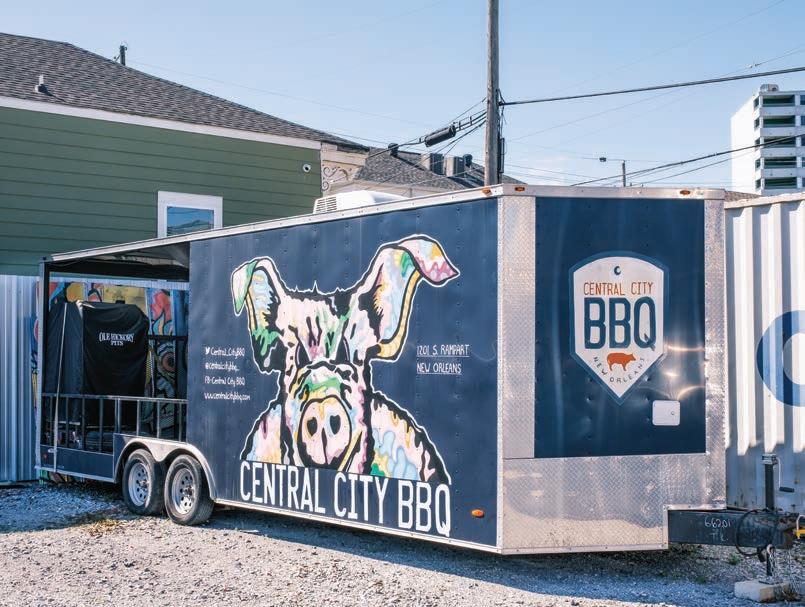
The operation of machinery or equipment that is attached to, or part of, a land vehicle that would qualify under the definition of “mobile equipment” if it were not subject to a compulsory or financial responsibility law or other motor vehicle insurance law where it is licensed or principally garaged.
So, what happened? The child was injured because of the operation of equipment (the smoker/grill) that was attached to or part of the land vehicle (the trailer). So, even if the trailer/smoker is
an “auto” because it’s subject to a motor vehicle law, this exception says that if it would otherwise be “mobile equipment” if it wasn’t subject to such a law, then the exclusion doesn’t apply. In other words, the CGL policy provides coverage for the operation of the smoker/grill whether it’s “mobile equipment” or an “auto.”
An issue that often comes up in E&O classes is whether an insured has an obligation to read the policy. Case law varies, with some courts opining that, even if an insured read the policy, they wouldn’t understand what is and isn’t covered. In some cases, that’s probably true. This claim is a good example of where 99.99% of insureds who read the policies involved would still have no clue as to whether there was coverage under which policy. Admittedly, even my head is spinning — so the next time a customer asks a coverage question, hesitate before suggesting that they simply read the policy.
Wilson, CPCU, ARM, AIM, AAM is the founder and CEO of InsuranceCommentary.com and the author of six books, including “When Words Collide…Resolving Insurance Coverage and Claims Disputes.” He can be reached at Bill@InsuranceCommentary.com.
OCTOBER 16, 2023 INSURANCE JOURNAL | 43 INSURANCEJOURNAL.COM
Idea Exchange: Agency Management
Making Connections Leveraging Memberships to Boost Business, Improve Community
As a young professional I was very interested in becoming active in my community. Of course, I knew that this would help my business career but I also had the philosophy, from an early age, that we all stand on someone else’s shoulders. We owe the people who came before us a contribution to the present as well as the future.
I asked a co-worker if his father, a Rotarian, would take me to a meeting. He not only did that but proposed me for membership.
have little regard for opportunists.
So, the very best strategy for maximizing the personal, or business benefits, of joining community organizations is to become a doer and seek to create value for the organization or community. This involves simply putting others first, which is what the best agents always do anyway. Business will come, probably faster and easier with this approach than any other. With this in mind, here are some of the best opportunities for building a strong network while making a positive impression and difference in your community.
your feet wet, often with other younger professionals. It’s also an opportunity to demonstrate your commitment, hard work and contribution, which can lead to additional leadership opportunities.
By Tony Caldwell
Shortly after becoming a Rotarian, a member pointed out to me that some people are “joiners” while others are “doers.” Some, of course, are neither. I’ve found great benefit in building my career by being a joiner, as well as a doer.
Most agencies, in my experience, encourage employees and partners to join civic and other organizations for visibility and the connections they bring. But as a long-time doer, I can tell you that simply joining does little good for anyone and in fact can actually harm one’s reputation. So, if you have joined, or plan to join a board, civic club, or other community organization, I’d like to encourage you to be active and participate as fully as possible.
Not only are the doers the people who become best known, they generally are the most respected. Over time, a doer’s network grows and the value of it will increase exponentially, particularly in comparison to that of the joiner.
There is a third type of joiner, different than either the doer or the free loader — the “opportunist.” Opportunists are typically people who quickly move from joining an organization to prospecting other members. Generally, the most influential people in any organization, often those who can be the best insurance prospects,
Civic Clubs
Exploring Rotary, Lions Clubs, Kiwanis, and other civic organizations can be a great first step to building a professional network.
Often, there are a limited number of people in any profession in a given club, which means you have the opportunity to meet people from varied backgrounds and professions. The clubs themselves have regular social opportunities to get acquainted and become friendly with other businesspeople. Usually, members of other nonprofit boards, associations and organizations in the community are also civic club members, so joining one, and pitching in, is often a way to become quickly involved in other opportunities.
Nonprofit Boards of Directors
There are virtually endless numbers of charitable and nonprofit organizations in any community. Each has a board of directors guiding its work and often have auxiliary groups that participate in supporting activities. Actively joining one or more of these organizations is a great way to not only participate and give back to your community but also to build your professional network.
If the organization is large enough, they may have a junior or auxiliary board. Joining one of these is a great way to get
With so many choices, it is important to think through where you can have the greatest impact given your own personal circumstances and interests. Choosing wisely can lead to a lifetime of contribution, friendship, connection and even business growth in the end. Be careful not to commit to more organizations than you can make a positive contribution to. Overcommitting and then underperforming will result in short tenures, frustration for you and a diminished reputation.
Leadership Development Organizations
In all states and most communities there are existing organizations that serve to expose rising leaders to opportunities and challenges in their states and communities and to develop the capabilities of these rising leaders to meet them.
I first participated in “Leadership Oklahoma City” many years ago, which gave me exposure to many things I didn’t know much about. Importantly, I also met people who were involved in pursuits I wasn’t familiar with, made many lifelong friends and had the chance to develop my own leadership abilities. Later I participated at the statewide level in “Leadership Oklahoma” and broadened my knowledge, capabilities, connections, and opportunities for contribution still further.

Usually, these organizations are highly selective and past contributions in the community are a requirement for consideration. So, as you develop your network, civic involvement, and leadership contribution, these organizations can become an excellent accelerator.
Industry Association Involvement
Almost all agencies are joiners of their local and state professional associations
44 | INSURANCE JOURNAL | OCTOBER 16, 2023 INSURANCEJOURNAL.COM
like the Independent Insurance Agents and Brokers Association of America (Big I) and National Association of Professional Insurance Agents (PIA). And while your agency or individual dues, PAC contributions and convention attendance can be valuable, becoming a doer is much more valuable and can be much more fun.
For agents under 40, the Big I’s Young Agents program can be an excellent way to make lifelong friends, professionalize competition and develop connections that may be useful in growing your career or your agency.
Often, state associations have leadership training programs that can help you make a more valuable contribution and accelerate your professional development. Board of directors involvement can eventually be a very satisfying and enjoyable way to give back to the industry that supports your business and career.
And, ultimately, you will feel a sense of
self-satisfaction in the fact that your association participation provided a means for you to give back, contribute and improve opportunity for those that follow you.
are also by nature doers. Because of this, they often make the very best board members, civic club members and volunteers in general.
Connecting the Dots

Insurance professionals are typically outgoing people by nature. Usually our industry attracts people who, while they may be personally ambitious, are interested in making their communities better. So, being a joiner is natural and enjoyable. Ambitious people, especially driven ones,
The payback for them in committing to the time and effort involved can be tremendous. You get to meet and make friends with many people like yourself, which is fun and rewarding. As a bonus you have the opportunity to be a real difference maker in ways that not only benefit your community but are personally fulfilling and rewarding. For those who are patient, there are also benefits of carefully building a solid reputation as a thoughtful and caring person who can be counted on. The business return on such an investment can be incalculable.
Caldwell is an author, speaker and mentor who has helped independent agents create more than 250 independent insurance agencies. Website: www.tonycaldwell.net. Email: tonyc@oneagentsalliance.net.
OCTOBER 16, 2023 INSURANCE JOURNAL | 45 INSURANCEJOURNAL.COM
‘The very best strategy for maximizing the personal, or business benefits, of joining community organizations is to become a doer and seek to create value for the organization or community.’
Idea Exchange: Emerging Markets

3 Emerging Risks to Watch: Rising Lumber Costs, Solar Flares, Underground Climate Change
 By Lee Shavel
By Lee Shavel
The risk landscape is seemingly ever-expanding. While the insurance industry faces the familiar — yet more costly — severe weather activity, there may be new risks emerging below the surface and above the atmosphere. From supply-chain chaos and soaring reconstruction costs stemming from wildfires across North America to the potential long-term effects of a warming planet, these three emerging risks may impact insurers this year and beyond.
Canadian Wildfires May Fuel Rise In Reconstruction Costs
The historic wildfire season in Canada
has affected residents all across North America, driving massive plumes of hazardous smoke through a swath of the United States. Residents on the East Coast, who typically don’t experience the effects of wildfires, began checking their local air quality index as, for a moment, cities such as New York, Philadelphia and Washington, D.C., had the worst air quality in the world.
Beyond the eye-watering air lies a potential impact for some insurers: rising lumber costs.
The U.S. generates between 60% to 70% of its softwood lumber domestically and imports the rest. The vast majority of those imports come from Canadian suppliers. The fires have directly impacted that country’s prodigious forestry industry — closing sawmills and driving lumber prices higher.
Rising lumber prices could significantly impact reconstruction costs many months after the fires ultimately subside.
In 2017, lumber costs skyrocketed by 14 % following similar fires, according to Verisk research. This spike in the cost of lumber helped nudge year-over-year reconstruction prices up to 4.8% nationally, a jump from a general average of around 2%-3% since 2015. This trend carried over into the following year, with prices in lumber and reconstruction costs finally subsiding roughly a year after the end of the fire season.
The price of lumber per thousand feet has rebounded in the weeks following the Canadian wildfires, and the cost of lumber in Hawaii — where the price for building materials is ordinarily 35% to 40% greater than on the mainland — is likewise antici-
46 | INSURANCE JOURNAL | OCTOBER 16, 2023 INSURANCEJOURNAL.COM
pated to surge following the Maui fires.
If the past is prologue, lumber prices — and reconstruction costs — may start to climb this fall and continue to increase through the summer of 2024.
Potential Solar Flare Losses Are Out Of This World
Space weather isn’t just an astrophysical curiosity — it can lead to potentially significant insurer losses. Research published by Verisk’s Emerging Issues team showed that an extreme space weather event of the kind that impacted the Earth in 1859 could trigger insured losses ranging between $53.2 billion and $323.9 billion.
And we appear to be entering a more dangerous period for space weather events.
Every 11 years or so, the sun’s magnetic field flips in a process known as the solar cycle. Just as hurricanes have their turbulent seasons, the sun also experiences a disruptive and potentially destructive leadup to this momentous magnetic maneuver known as a “solar maximum.”
The solar flares and related space weather produced during this transitional
cycle can potentially damage satellites and impair electrical grids, leading to possible interruption of radio communication and air travel and a variety of climate impacts.
Scientists can typically project the approximate timing of these solar seasons. The next cycle is anticipated to occur around 2025 or 2026. However, the recent uptick in solar weather has caused some experts to question the previously agreed-upon consensus.
Indeed, according to data from the Space Weather Prediction Center, the actual F10.7 index — a widely used diagnostic measuring radio waves emanating from the sun — has been trending higher in recent years than experts had previously predicted, indicating more intense solar activity capable of creating disruptive geomagnetic storms here on Earth.
Will Underground Climate Threats Surface?

While climate change is usually associated with rising sea levels and increasing surface temperatures, there may be a subterranean climate threat that property insurers should consider.
Researchers from Northwestern University recently reconstructed ground temperature variations from 1951 through the present day in various locations in Chicago. Through this work, they modeled the ways in which underground temperatures could evolve through 2051, generating simulations suggesting that warmer sub-surface temperatures could trigger ground swelling and expansion of up to 12 millimeters. It may also cause the ground to contract and sink beneath the weight of surface infrastructure by up to 8 millimeters.
Though these shifts in soil and stratum temperature may not trigger sudden building collapses, the researchers warned that they could pose long-term consequences for “serviceability of structures and infrastructure.” That’s partly because modern infrastructure and property were not necessarily designed to accommodate ground deformations caused by rising sub-surface temperatures. Structural damage anteriorly ascribed to design flaws may have been exacerbated in part by unseen climate change beneath our feet.
While a cause for concern, the researchers additionally noted that this heat could potentially be trapped and used to heat the buildings above them rather than escaping into (and deforming) the ground around them.
Each of these risks has a different time horizon — lumber prices for the near present, solar flares in the near future, and underground climate in the long term.
One thing is certain: The risk management landscape is evolving.
Shavel is president and chief executive officer of Verisk, a data analytics and technology partner to the global insurance industry. He brings nearly 30 years of experience advising and leading publicly traded companies to Verisk.
OCTOBER 16, 2023 INSURANCE JOURNAL | 47 INSURANCEJOURNAL.COM
Idea Exchange: Talent
Cultivating Virtual Management Skills for the Hybrid World
The majority of the insurance workforce is now hybrid — if not fully remote — with just 4% of companies requiring employees to come into the office every day. Today’s managers must be able to engage and motivate their employees across various locations; yet it’s likely many have had no formal training specific to virtual management.

 By Alicia Morris
By Alicia Morris
As you consider your team members’ overall development plans, think not only about their ability to do their jobs well, but also their capacity for management in a remote world. Where may they need additional training and guidance? What skills do they need to further develop to effectively lead and coach others?
Gartner found 60% of hybrid employees consider their manager to be their main link to company culture. Strong virtual managers impact your organization’s overall productivity, culture and retention rates. Whether you are growing virtual management skills within your team or brushing up on your own capabilities, here are a few areas of focus.
Accountability
Set clear expectations and goals for your team’s managers and encourage them to do the same for their direct reports. While some individuals may prefer to work autonomously with periodic check-ins, others may be more comfortable with frequent communication throughout their workdays. Regardless of individual management and communication styles, ensure all employees understand their personal goals, as well as larger team goals, and are held accountable for progress. Confirm everyone understands how their performance will be measured, while also aligning on how often updates should be shared.
Hybrid Meeting Facilitation
Most professionals are now well-versed
in the concept of video conferencing on platforms such as Zoom and Teams; however, effectively facilitating these meetings requires thought and intentionality. Your team’s approach to meetings is also a reflection on your culture from whether video is regularly turned on, to the frequency of casual relationship-building conversations, to the ability to achieve desired outcomes or move projects forward.
Ask managers to also pay attention to how their employees show up. If talkative individuals are unusually quiet during a team call, it may be valuable to check in and see how they’re doing. If some team members tend to monopolize airtime, intentionally provide the space for more reserved team members to share their thoughts. This is even more critical during meetings where some individuals are in person and others are remote. Ensure those who aren’t physically in the room are included and have a chance to contribute as much as in-person participants.
Effective Communication Methods
Every manager will have their own
style and every employee will have their own management preferences. Encourage all team members to be transparent in sharing what works best for them, while also being aware and respectful of others’ needs. Make multiple tools available to accommodate a variety of communication styles and urge managers to leverage those that are most effective for their specific circumstances. For instance, some meetings — such as daily stand-ups — may be just as effective in the form of a group chat. At the same time, help others achieve self-awareness of how their communication style may come across virtually versus in person. Often, tone and meaning can be misconstrued in written communication, causing unnecessary concern, confusion or misalignment. Messaging and delivery may need to be tailored to best resonate depending on the situation, topic and employee.
Consistent Communication
While impromptu opportunities to connect are not as readily available in the virtual world as they were in a physical office environment, ongoing and open
48 | INSURANCE JOURNAL | OCTOBER 16, 2023 INSURANCEJOURNAL.COM
communication remains essential. According to a Gallup survey, 80% of employees who received meaningful feedback from their manager in the previous week were considered fully engaged. Commit to consistent and thoughtful touchpoints with all employees. Ask managers to schedule weekly or bi-weekly one-on-one meetings with their direct reports and set specific agendas to make sure time is well spent. This may include asking about where employees feel they’re excelling, challenges they are facing, and their thoughts on their workload and job in general.
Network Mapping
Along with building employee/ employer relationships, ensure managers are aware of their employees’ networks within the larger organization. Talk to your managers about their plans for connecting individuals who may not naturally interact on projects and in meetings. How are they getting exposure to other individuals and departments within the organization? In what ways are they ensuring ongoing collaboration? Especially for individuals in more independent or siloed roles, increased team and company interaction may be necessary for them to feel adequately connected and engaged.
Interpersonal Skills
A Harris Poll found nearly 70% of managers are uncomfortable commu-
nicating with employees — let alone giving feedback. Interpersonal skills and emotional intelligence are essential for managers to build strong employee-employer relationships and foster a sense of trust, regardless of location. Find ways to incorporate emotional intelligence training into employees’ professional development plans at all stages of their careers, with an even greater focus as they ascend into management ranks. Having a better understanding of others’ emotions provides the opportunity to leverage skills such as empathy, coaching and problem solving to overcome hurdles, provide feedback and
achieve better outcomes.
Ongoing Support
Provide current managers with support, tools and information to help them do their jobs to the best of their ability. Identify stretch projects, pair them with mentors and give them visibility to other leaders in the organization even if it is through a computer screen. At the same time, consider how your team and/or organization is investing in developing high potential individuals into future managers. Make sure you’re rethinking how to grow individuals in a virtual environment, understanding their career aspirations, and being intentional in providing opportunities to expand their skillsets.
The formula for a great manager has evolved in today’s hybrid world and organizations are working to adjust their approach to better prepare and support these individuals. By providing both current and future managers with the skills, goals and knowledge to engage their employees, you’ll be setting them — as well as your organization — up for long-term success.

The above company has made application to the Division of Insurance to obtain a Foreign Company License to transact Property and Casualty Insurance in the Commonwealth of Massachusetts.
Any person having any information regarding the company which relates to its suitability for the license or authority the applicant has requested is asked to notify the Division by personal letter to the Commissioner of Insurance, 1000 Washington Street, Suite 810, Boston, MA 021186200, Attn: Financial Surveillance and Company Licensing within 14 days of the date of this notice.
OCTOBER 16, 2023 INSURANCE JOURNAL | 49 INSURANCEJOURNAL.COM Advertisers Index Applied Underwriters www.auw.com 2 , 3, 52 Humana 7 Insurance Associates of America www.iaanetwork.com 35 Insurbanc www.insurbanc.com 37 M.J. Hall & Company, Inc. www.mjhallandcompany.com W1 PersonalUmbrella.com www.personalumbrella.com 33 Staff Boom www.staffboom.com W2, E2 Surplus Lines Association of California www.slacal.com W3 Texas Surplus Lines Association www.tsla.org SC2 The Hartford www.thehartford.com 5 October 16, 2023 Republic Fire and Casualty Insurance Company 4455 LBJ Freeway, Suite
Dallas,
75244
700
TX
Morris is a vice president at The Jacobson Group, the leading provider of talent to the insurance industry. Phone: 800-466-1578. Email: amorris@jacobsononline.com.
Closing Quote
Redefining ‘Protection’ to Build a More Resilient Future
business owners are turning to their agents to discuss the impacts inflation or supply chain disruptions are having on their rates, an 11-point increase from the fall of 2022.
By Mark Berven
Most American consumers and business owners share concerns about the year ahead as economists debate whether a soft or hard landing is in store for the U.S. These concerns, driven by sticky inflation and rising interest rates, have led many to tighten their belts in search of relief — including looking for ways to save on their insurance premiums.
According to Nationwide’s recent Agency Forward survey, while agents are busy checking in with clients to ease their fears, they themselves are also worried about the economy and the impact a slowdown could have on their agency. In fact, almost half of agents report declining customer demand over the past six months, and six in 10 anticipate an upcoming recession.
These findings underscore the importance of strong partnerships between carriers and agencies to help navigate potential challenges ahead.
Supporting Economic Conversations
Inflation and rising prices are consumers’ and business owners’ most pressing concerns, prompting nearly half of consumers and a third of business owners to contact their agent to discuss their insurance policies. Another 30% of middle market
Many carriers have come to the table with resources to support agents in these conversations, with materials around increasing building costs, labor costs and actions customers can take to mitigate risks due to inflation. However, more than half of agents report being unaware of these offerings, and roughly 70% or more are not taking advantage of carrier-provided economic resources like webinars or economist commentary. As client discussions surrounding these topics take place, carrier partners must be available to help support these conversations on the importance of adequate protection versus shopping by price alone.
Redefining ‘Protection’
The industry has traditionally focused most of its energy on supporting customers when they have a claim. It’s time to broaden the definition of “protection” to emphasize our role in helping customers take proactive steps to prevent a loss from happening in the first place. Proactive risk management is a critical strategy for preventing unforeseen costs, especially when you consider that expense is a concern for half or more business owners and a third of consumers lack savings for emergencies.
While many agents are rightfully recommending risk mitigation services to clients to control costs, nearly 60% of
agents report being unfamiliar with carrier-provided risk management resources. Many carriers offer extensive guidance and services for identifying, assessing and mitigating potential risks, including advice for protecting against weather damage or water damage mitigation for businesses.
By tapping into these resources, policyholders can enhance their risk awareness, implement proactive measures, and ultimately reduce the likelihood of claims. This not only helps promote a safer, more secure future, but can lead to cost savings in the form of more manageable insurance premiums.Agents can promote these resources with clients as they can empower customers to make well-informed decisions and better protect their assets. Demonstrating your expertise in this area can also serve as a valuable customer retention tool.
Advocating for change
Finally, as the world grapples with challenges posed by severe weather and natural disasters, the collaboration between agents and carriers
can also be used as a force for change.
As we’ve witnessed from recent catastrophes, our communities and businesses are increasingly vulnerable. This is a pivotal moment for the insurance industry to lean into its central purpose of protection. Working together, agents, carriers and trade associations can advocate at national and local levels for systemic changes, such as enhanced building codes that make homes, businesses and communities more resilient. Not sure where to start?
Organizations such as the Insurance Institute for Business and Home Safety (IBHS.org) have a variety of resources agents can use to help clients mitigate risk.
As we navigate one of the most dynamic insurance markets in history, we have an opportunity to meet the moment with a focus on driving positive change. Together, we can redefine “protection” and build a more resilient future for us all.

Berven is president and chief operating officer at Nationwide Property & Casualty.
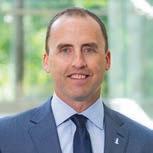
50 | INSURANCE JOURNAL | OCTOBER 16, 2023 INSURANCEJOURNAL.COM
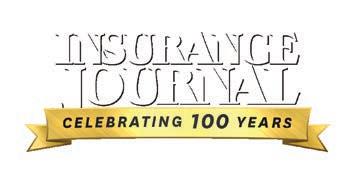

















































CONGRATULATIONS TO OUR AD STUDY WINNERS Insurance Journal commissioned Signet Research, Inc. to conduct its annual Ad Recall & Readership Study, which measured the memorability of all full and half-page ads in the July 3rd issue. The study is provided as a free service to our advertisers, who receive a personalized report with memorability score and verbatim reader comments. We’d like to congratulate the winning companies and thank the readers who provided feedback! Interested in participating in next year’s study? Contact Julie Tinney at 800-897-9965 x148. Applied Underwriters Independent Agent Back Page Ad Live 8.125” x 10.625” Trim 8.375” x 10.875” Bleed 8.625”x 11.125” Applied Underwriters Homeowners Including California Wildfire & Gulf Region Hurricane Structured Insurance • Financial Lines • Surety Aviation Space Environmental & Pollution Liability Real Estate Reinsurance • Warranty Contractual Liability MORE TO LOVE FROM APPLIED. MORE IMAGINATION. ©2023 Applied Underwriters, Inc. Rated A- (Excellent) by AM Best. Insurance plans protected U.S. Patent No. 7,908,157. It Pays To Get A Quote From Applied. Learn more at auw.com/MoreToLove or call sales (877) 234-4450 1st We make your clients safer. YOU’RE THE HERO. Your clients rely on your advice to protect their people and their business. With the state’s largest workplace safety team, training resources and more, we’ll help your clients work safe — and you’ll be the hero. See how our safety resources help you keep your clients happy and your agency strong at texasmutual.com/hero. 2nd Applied Underwriters Equity Comp Trucking Spread Ad Bleed: 16.75” x 11.125” Trim: 16.50” x 10.875” Live: 16” x 10.375” Applied Underwriters Contact: Sadie Brewer P: 402-342-4900 4371Email: smbrewer@auw.com Equity Comp Spread Bleed: Live: Underwriters Sadie smbrewer@auw.com APPLIED PROTECTS THE TITANS OF INDUSTRY. ©2023 Applied Underwriters, Inc. Rated A- (Excellent) by AM Best. Insurance plans protected U.S. Patent No. 7,908,157. Accepting large workers’ compensation risks. Most classes. All states, all areas, Simplified financial structure covers all exposures. EXPECT THE WINNING DEAL ON LARGE WORKERS’ COMPENSATION. Call (877) 234-4450 or visit auw.com to get a quote. 3rd throughout the sales process. We offer superior products that employers love, like payroll-plus-comp, and we make onboarding smooth and easy. When you or your clients call us, a real live person answers the phone. Simply put, you get the attention you deserve. of California. License No. 078229. “A” (Excellent) rated coverage through Omaha 844-761-8400 • omahanational.com Attention! You deserve it. We make sure you get it. Workers Compensation Insurance Coverage in: AZ CA CT GA IL NC NE NJ NY PA SC 844-761-8400 omahanational.com Smart. Different. Better. 4th Learn more at ForemostAgent.com/HitchLP ® we’re hooked on putting the Hitch in Your Pitch! Are you familiar with this tried and true cross-selling technique? It’s simple ... Ask your customer if their vehicle has a hitch. If it does, ask what they’re towing and where they’re going. Maybe they’re towing motorcycle, travel trailer, boat, personal watercraft or snowmobile. And maybe they’re taking their toys to a vacation home. Whatever towable risks come up, you’re in luck because you can likely insure them with Foremost! PUT THE HITCH IN YOUR PITCH to reimagine your cross-selling techniques! ® 5th What’s your ? Your clients have signature risk that defines who they are. Shouldn’t they have Signature Programs? RPS Signature Programs is your go-to underwriting resource for agents and brokers looking for specialized coverage. Your client’s risk is unique, different, a little out there — give us a try. Explore more than 40 niche programs, across multiple industries with a full suite of services — underwriting, distribution and claims management. RPSins.com/signatureprograms 6th














Workers’ Compensation • Transportation – Liability & Physical Damage • Construction Liability • Fine Art & Collections Homeowners – Including California Wildfire & Gulf Region Hurricane • Structured Insurance • Financial Lines • Surety Aviation & Space • Environmental & Pollution Liability • Real Estate • Reinsurance • Warranty & Contractual Liability Infrastructure • Entertainment & Sports ...And More To Come. MORE TO LOVE FROM APPLIED.® MORE IMAGINATION. ©2023 Applied Underwriters, Inc. Rated A- (Excellent) by AM Best. Insurance plans protected U.S. Patent No. 7,908,157. It Pays To Get A Quote From Applied.® Learn more at auw.com/MoreToLove or call sales (877) 234-4450








































 By Ken Sweet
By Ken Sweet




 By Ezra Amacher
By Ezra Amacher

 By Ezra Amacher
By Ezra Amacher















 By Andrea Wells
By Andrea Wells




















 By Susan Hatten
By Susan Hatten
















 By Lee Shavel
By Lee Shavel


 By Alicia Morris
By Alicia Morris








































